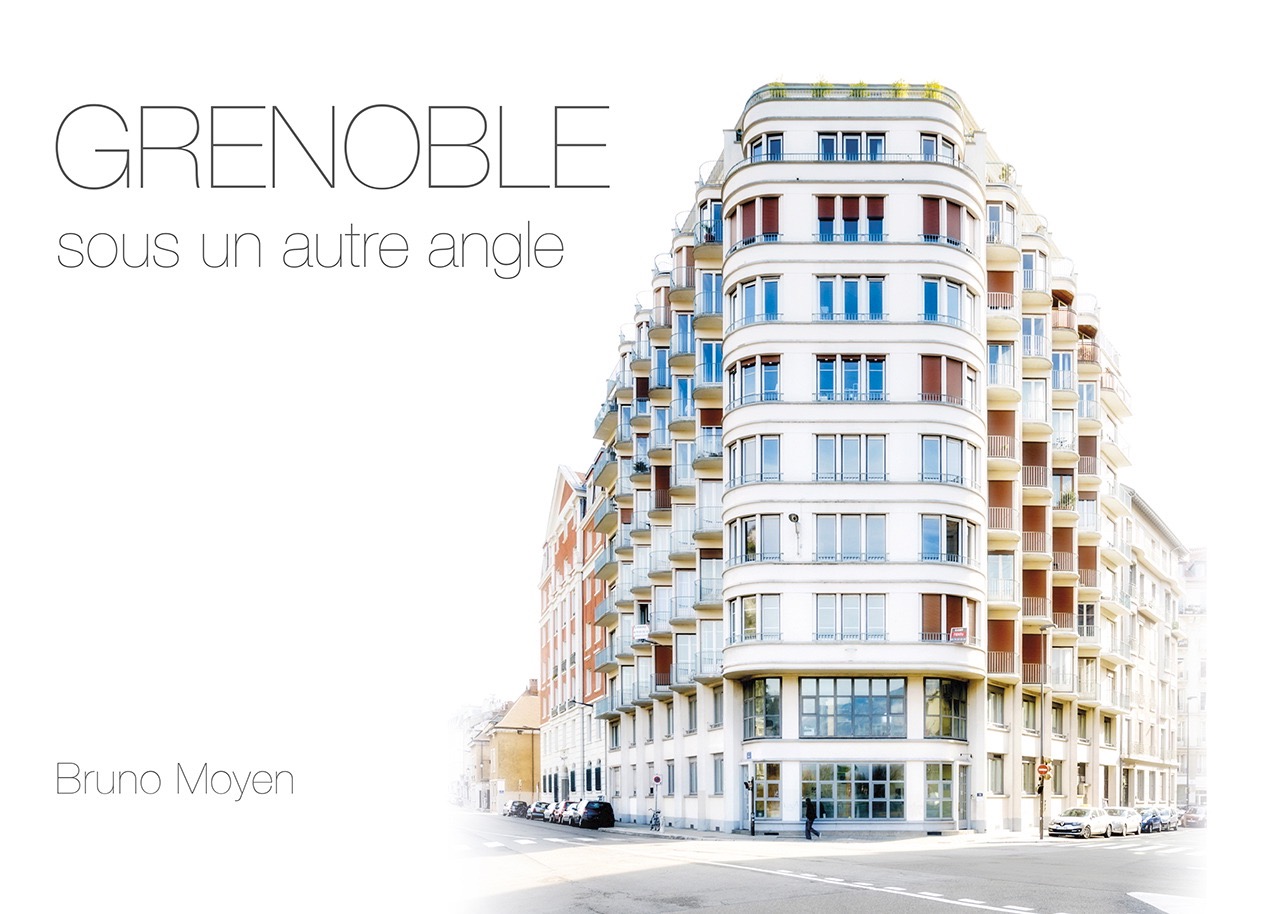
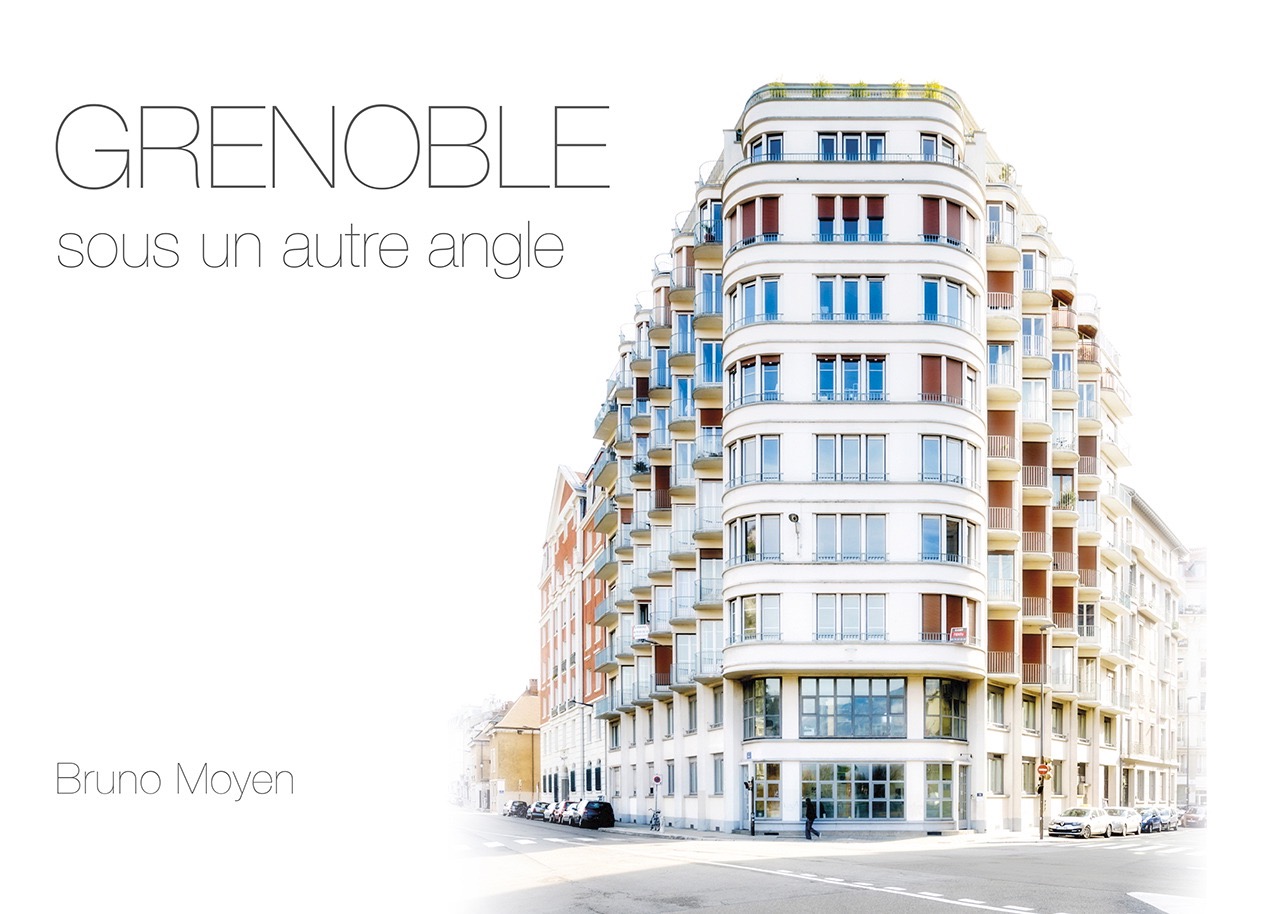
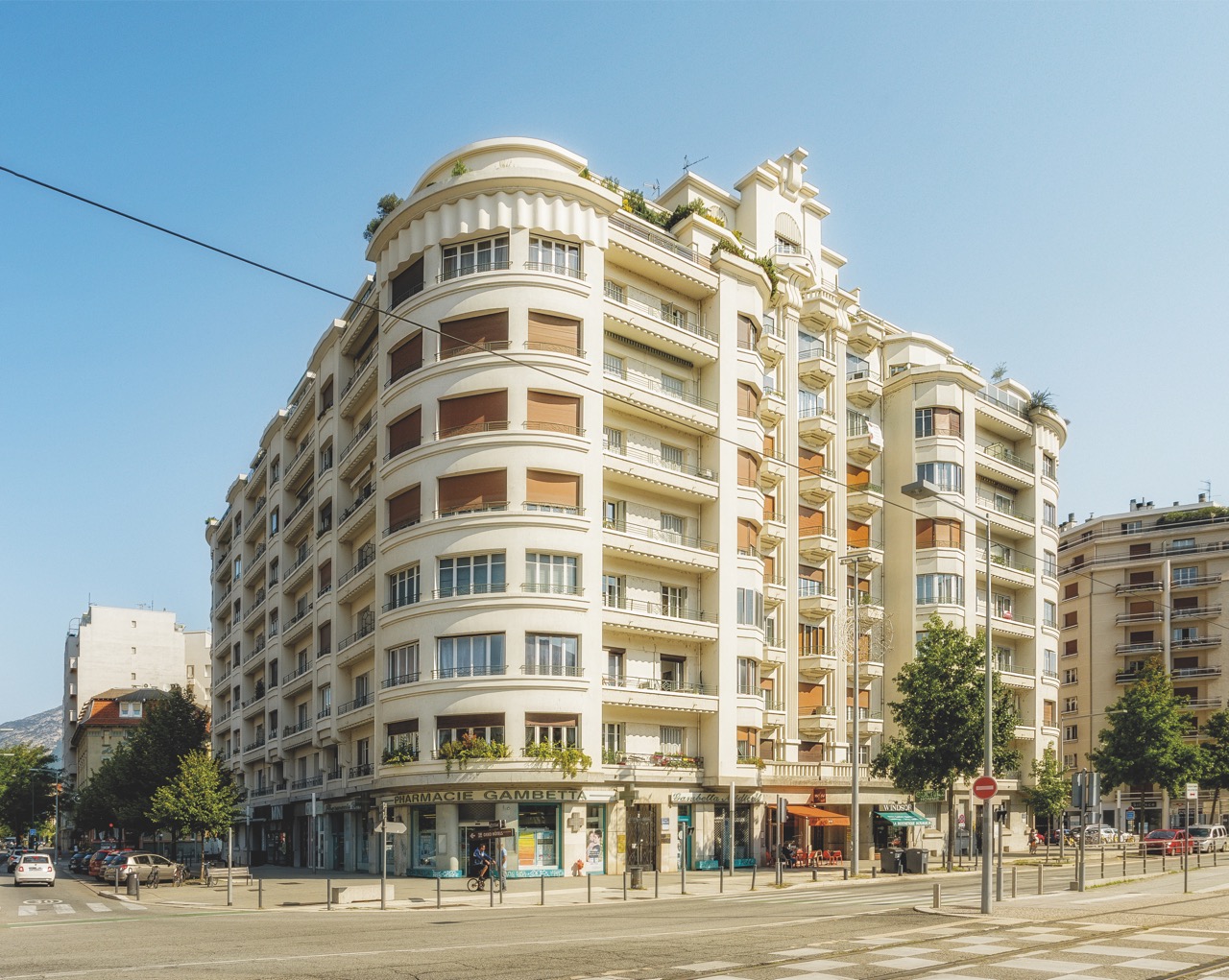
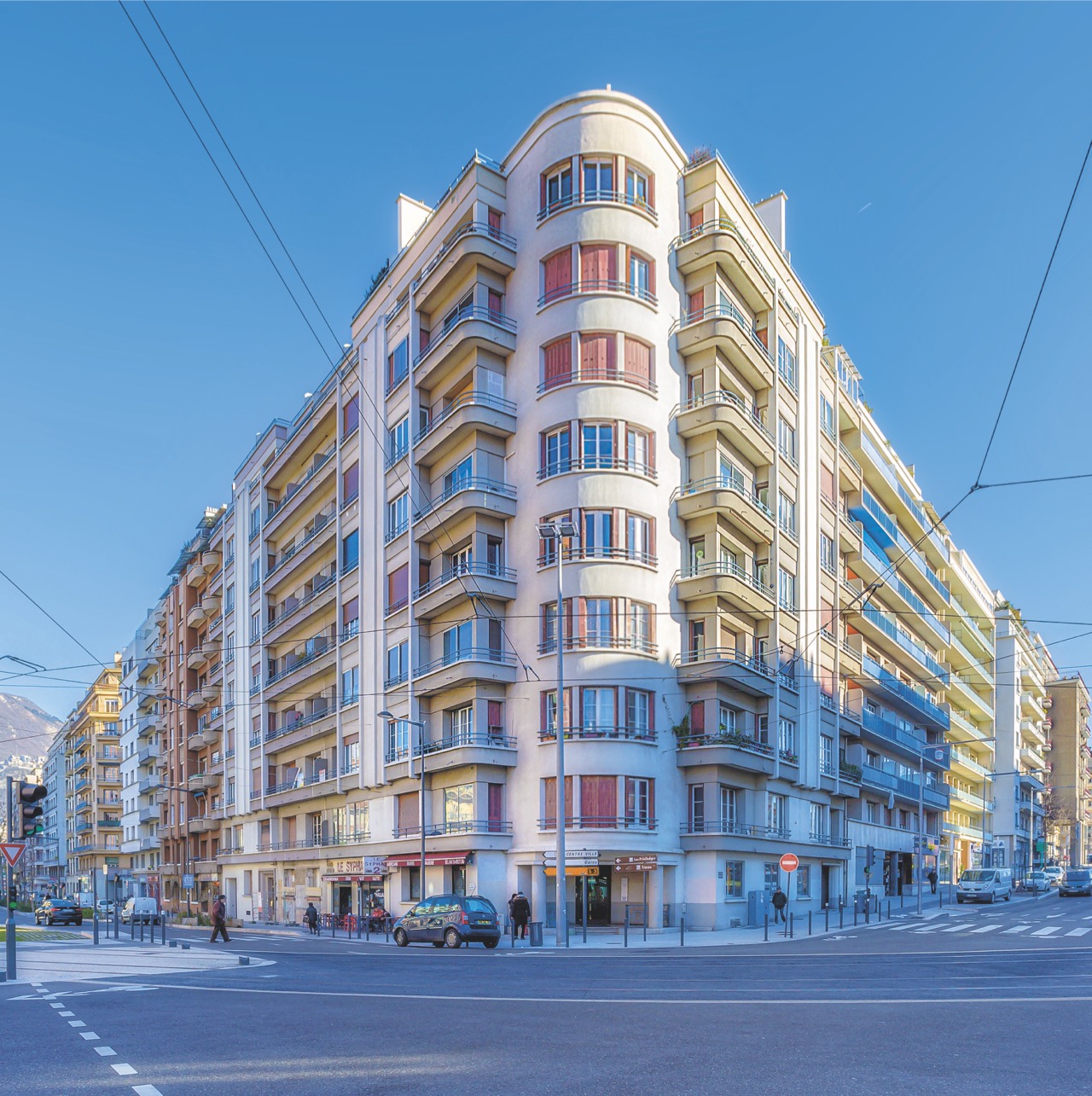
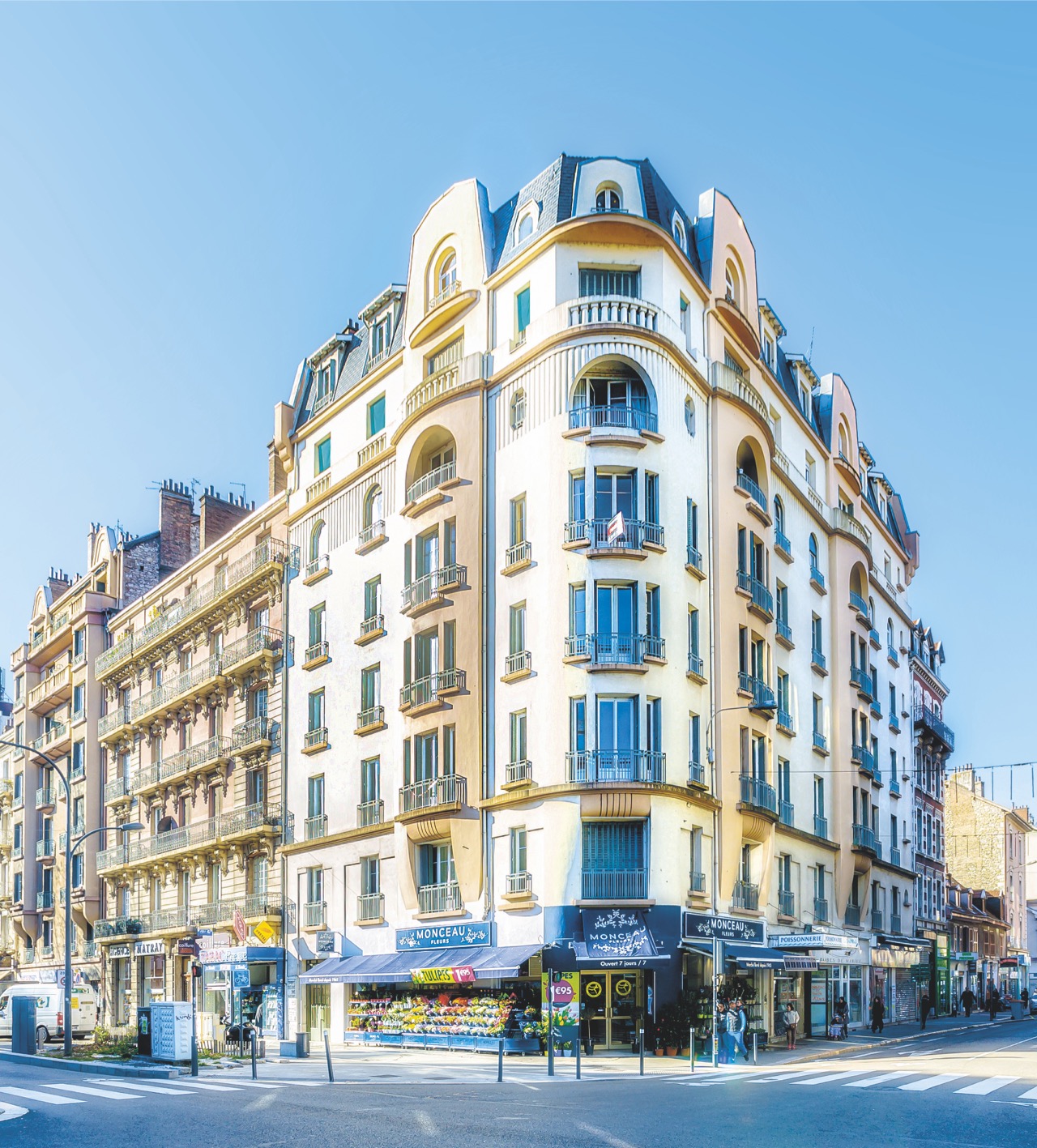
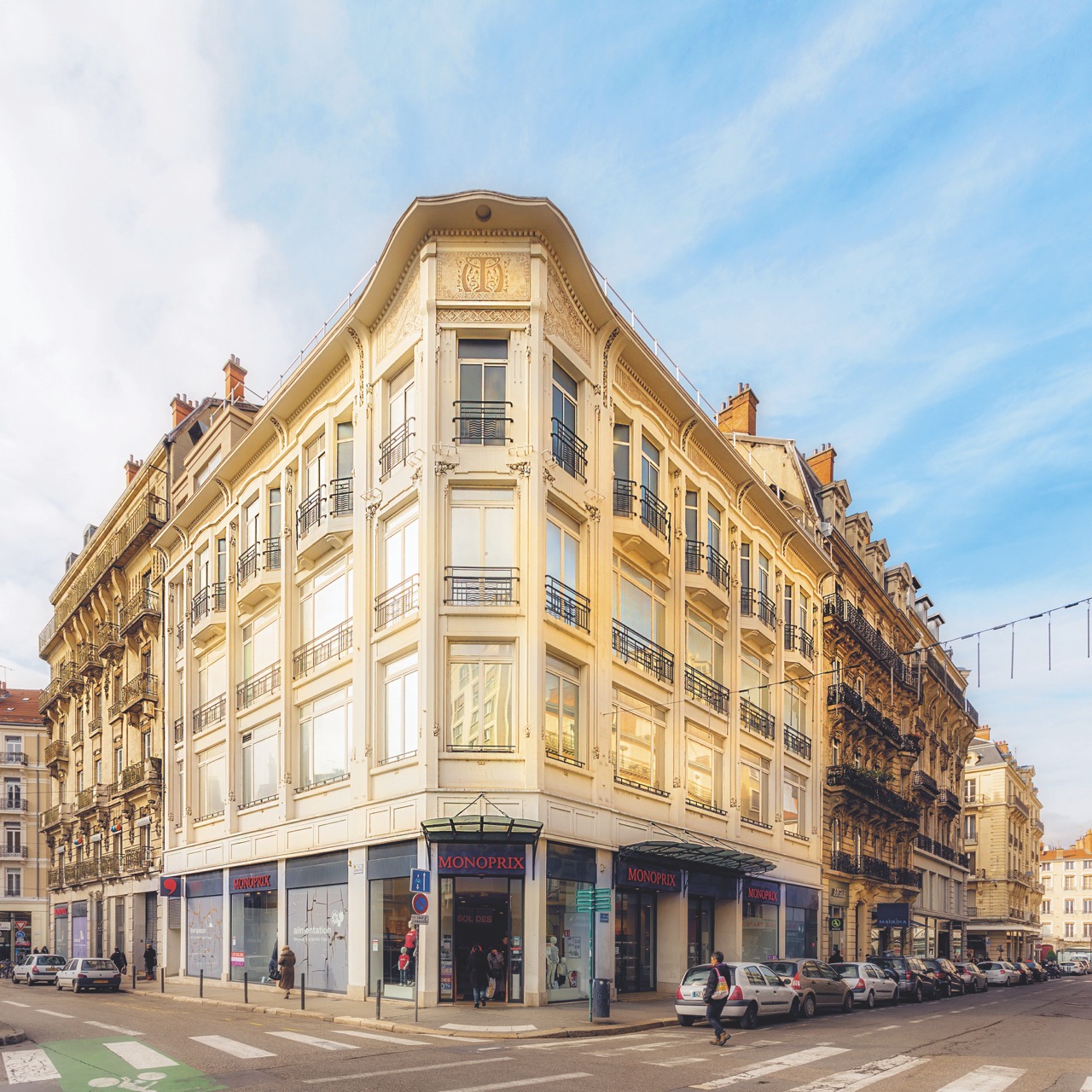
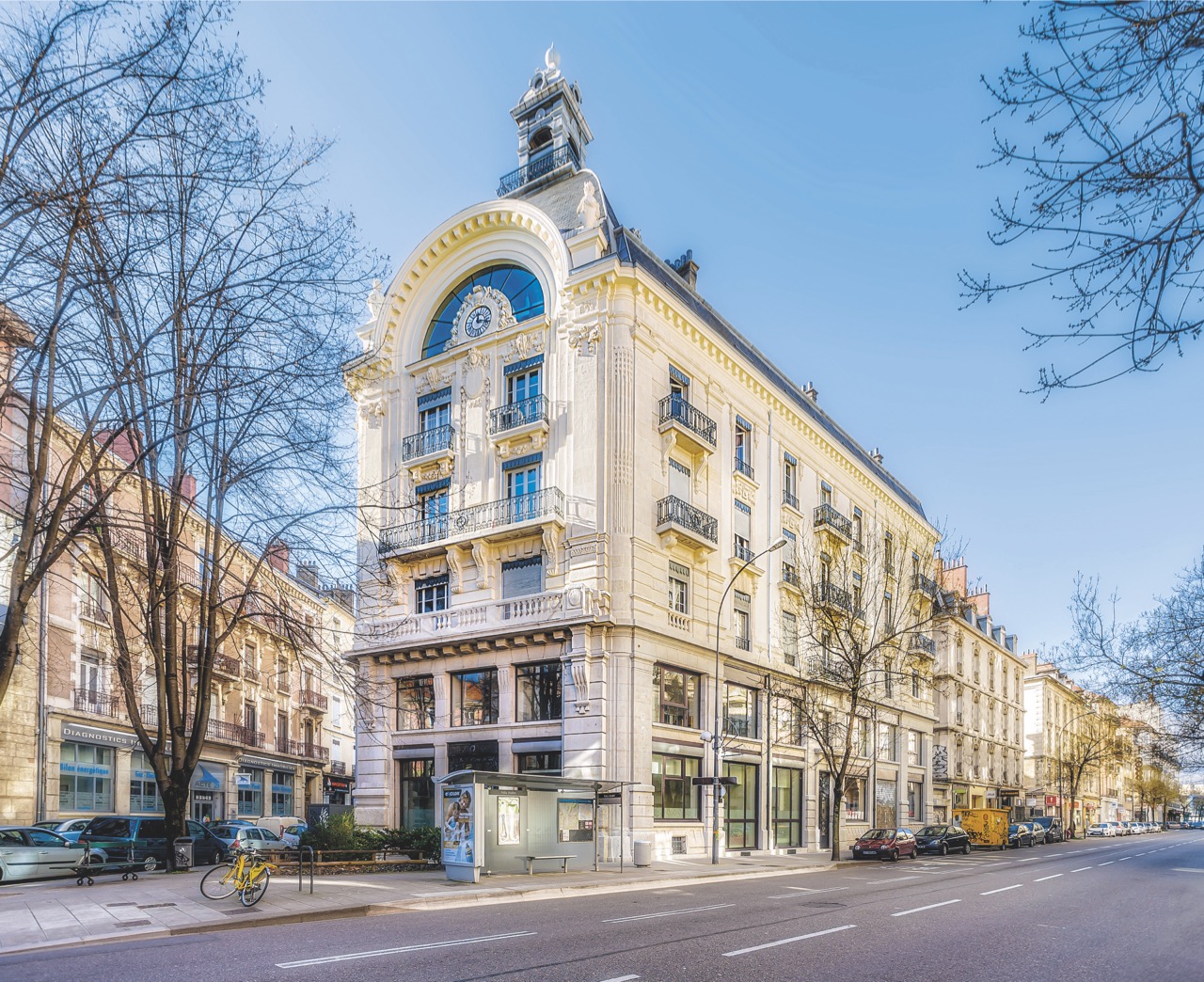
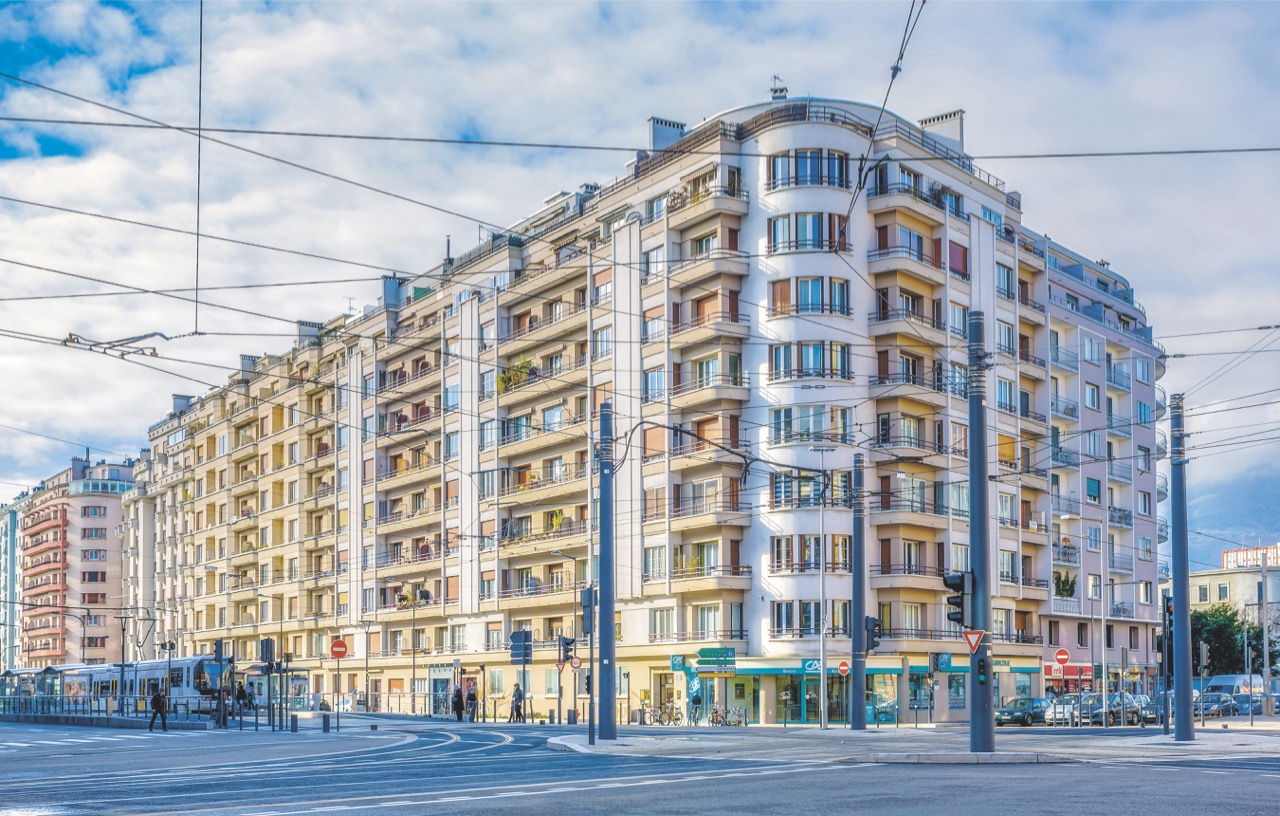
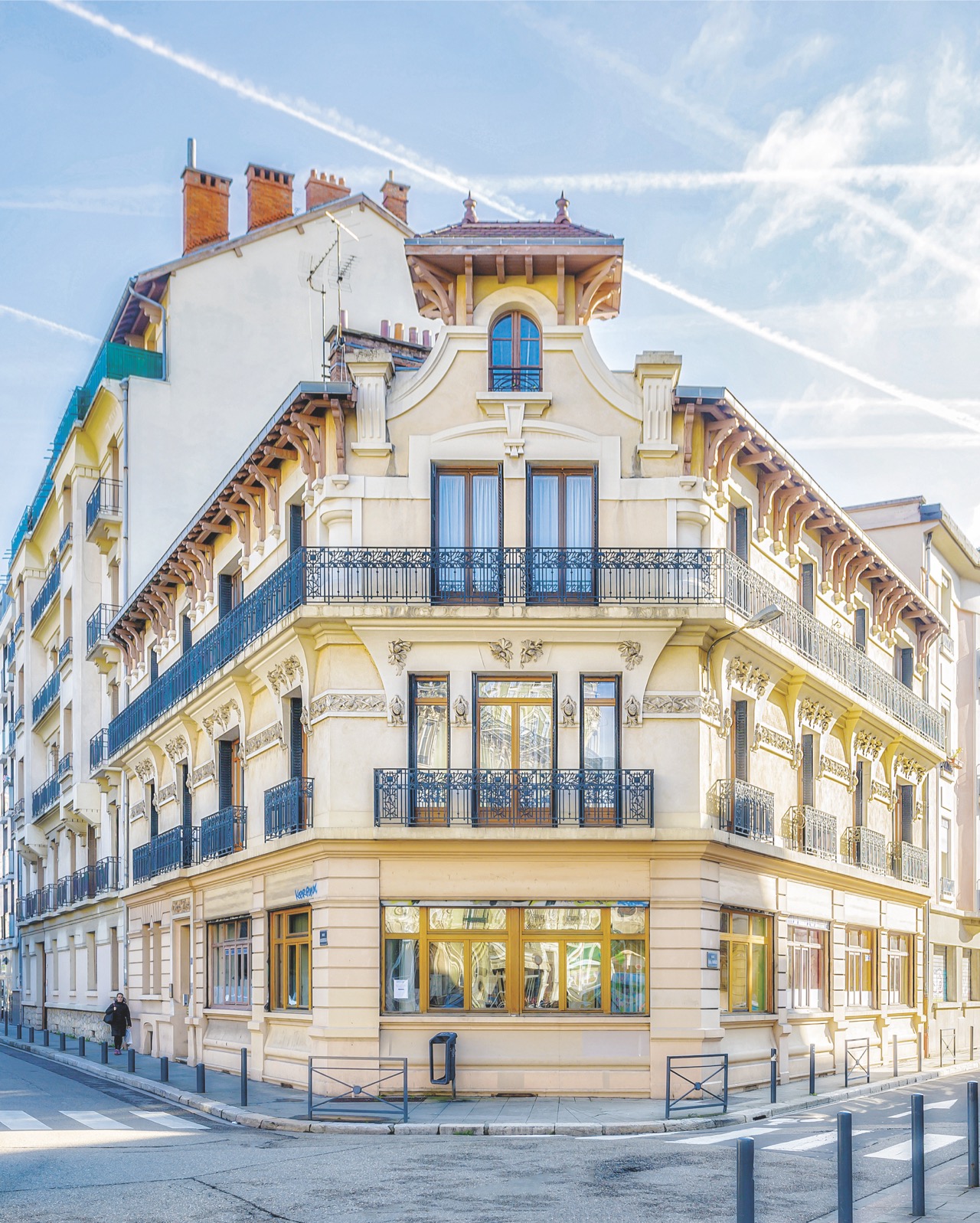
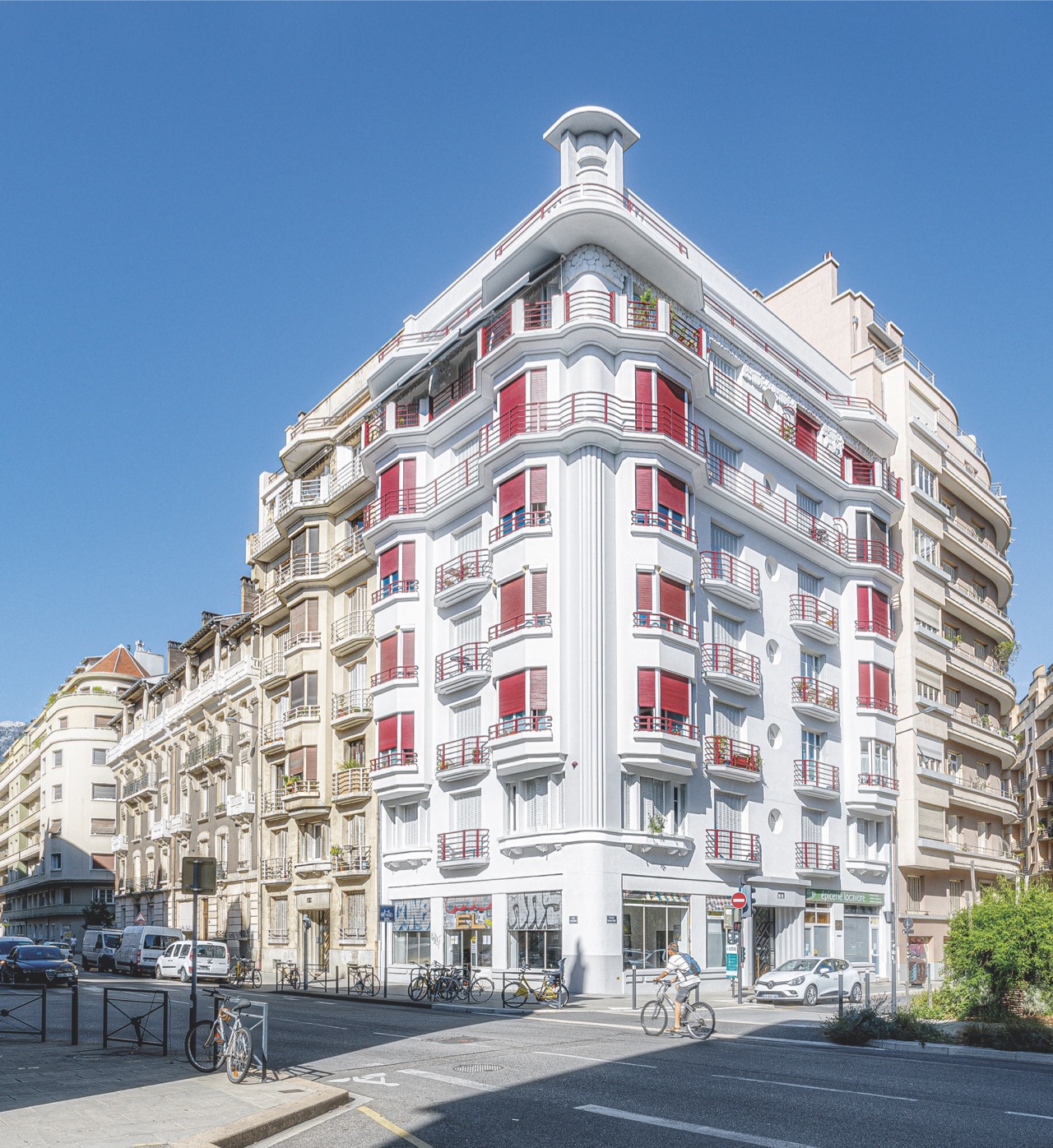
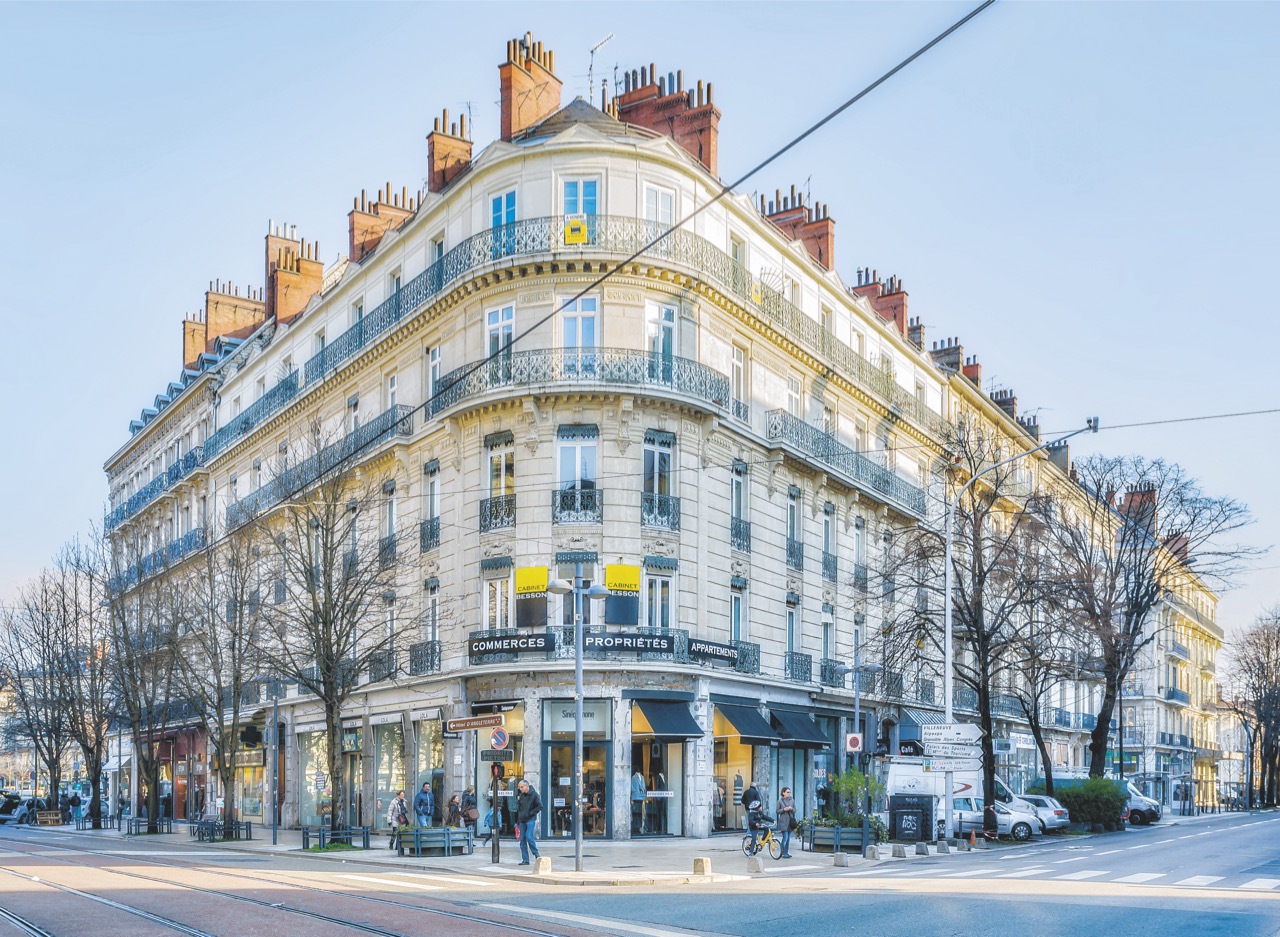
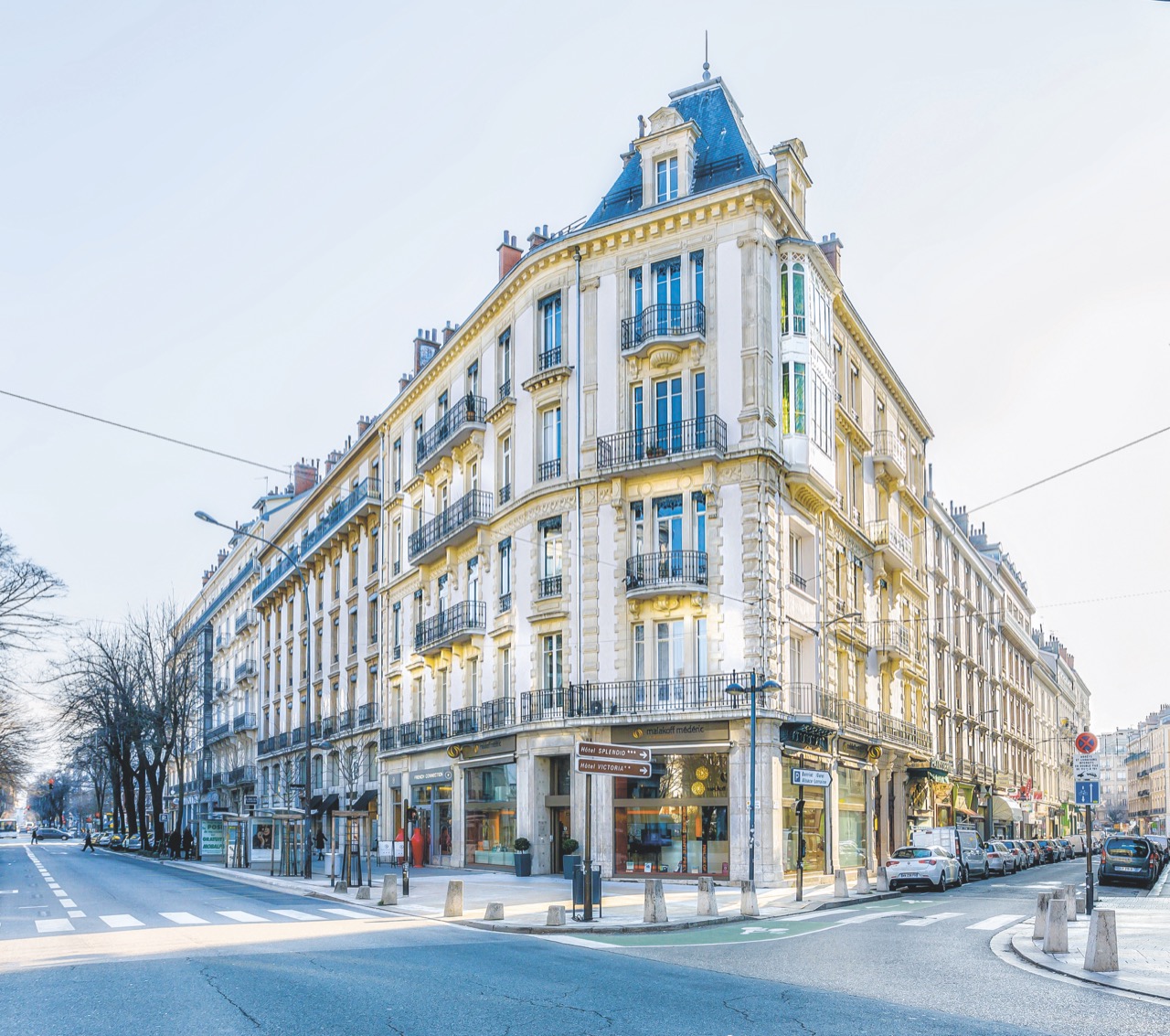
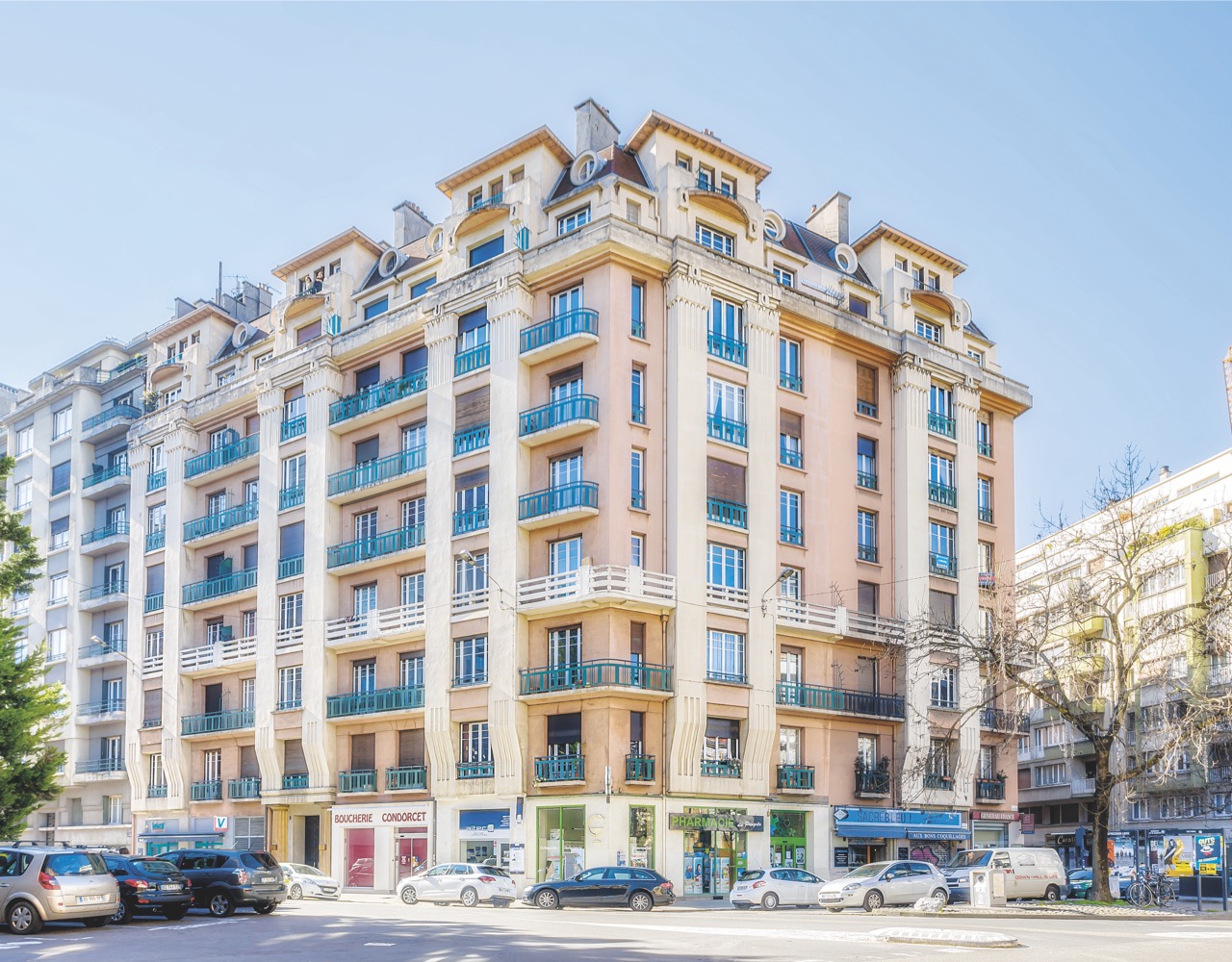
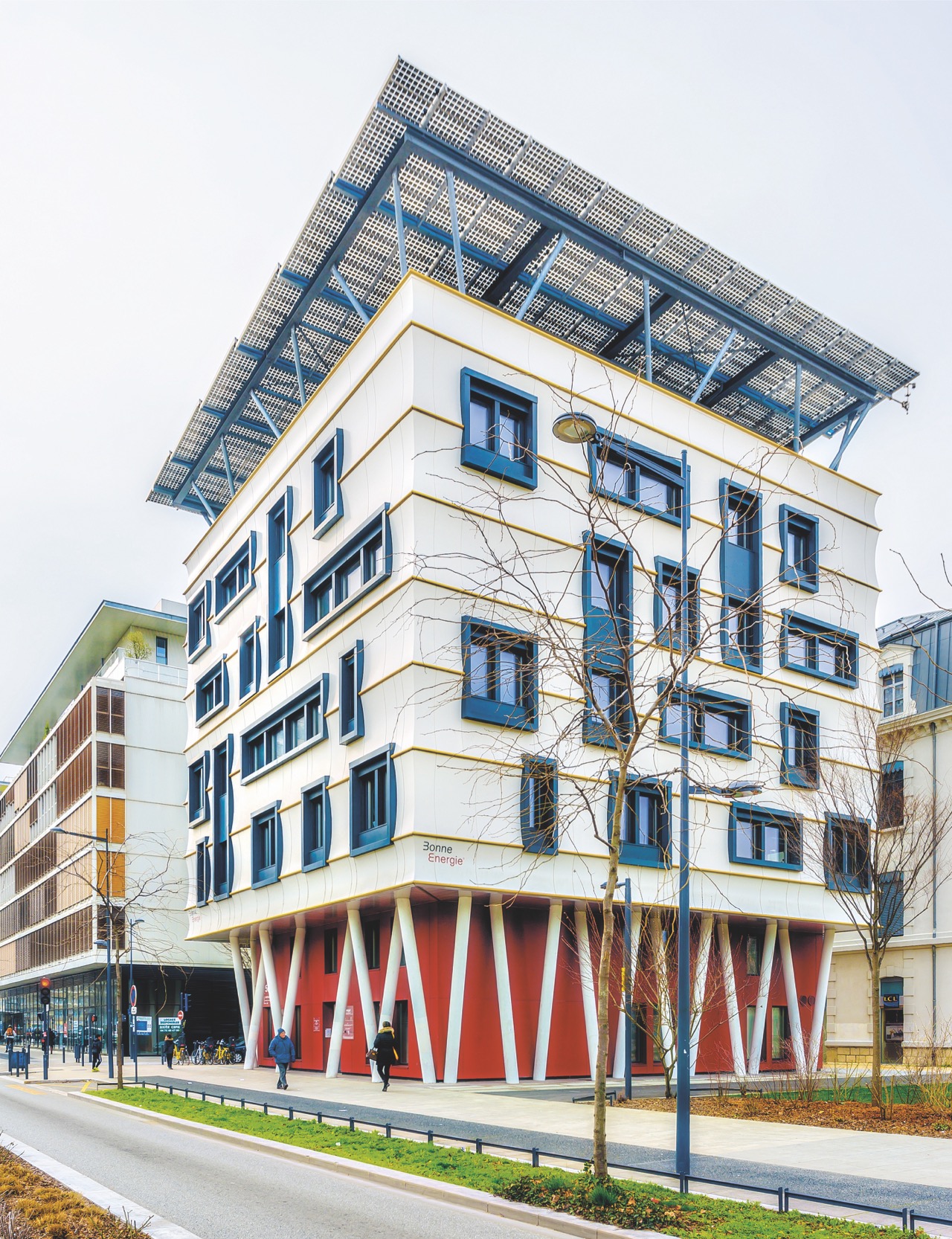
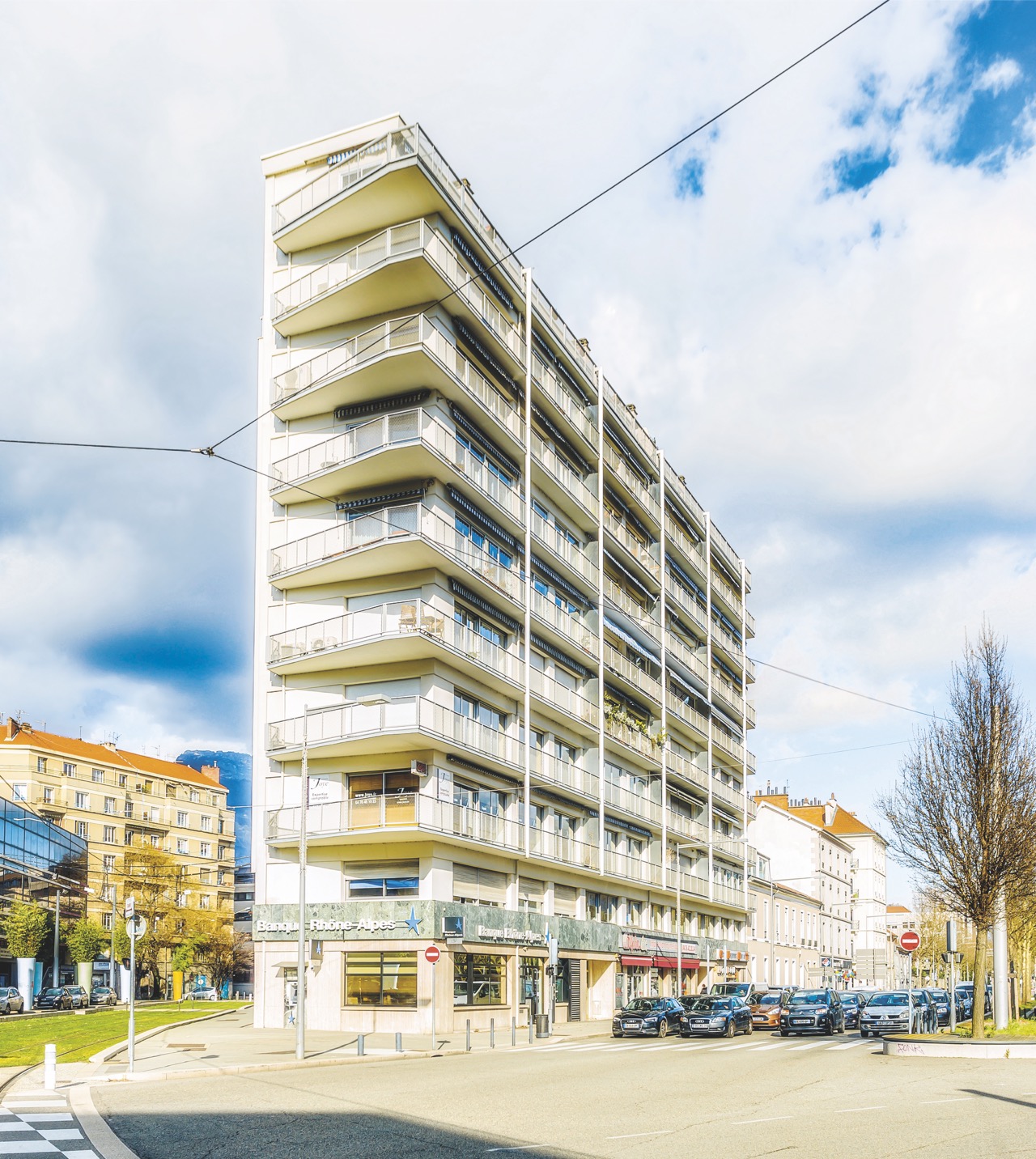
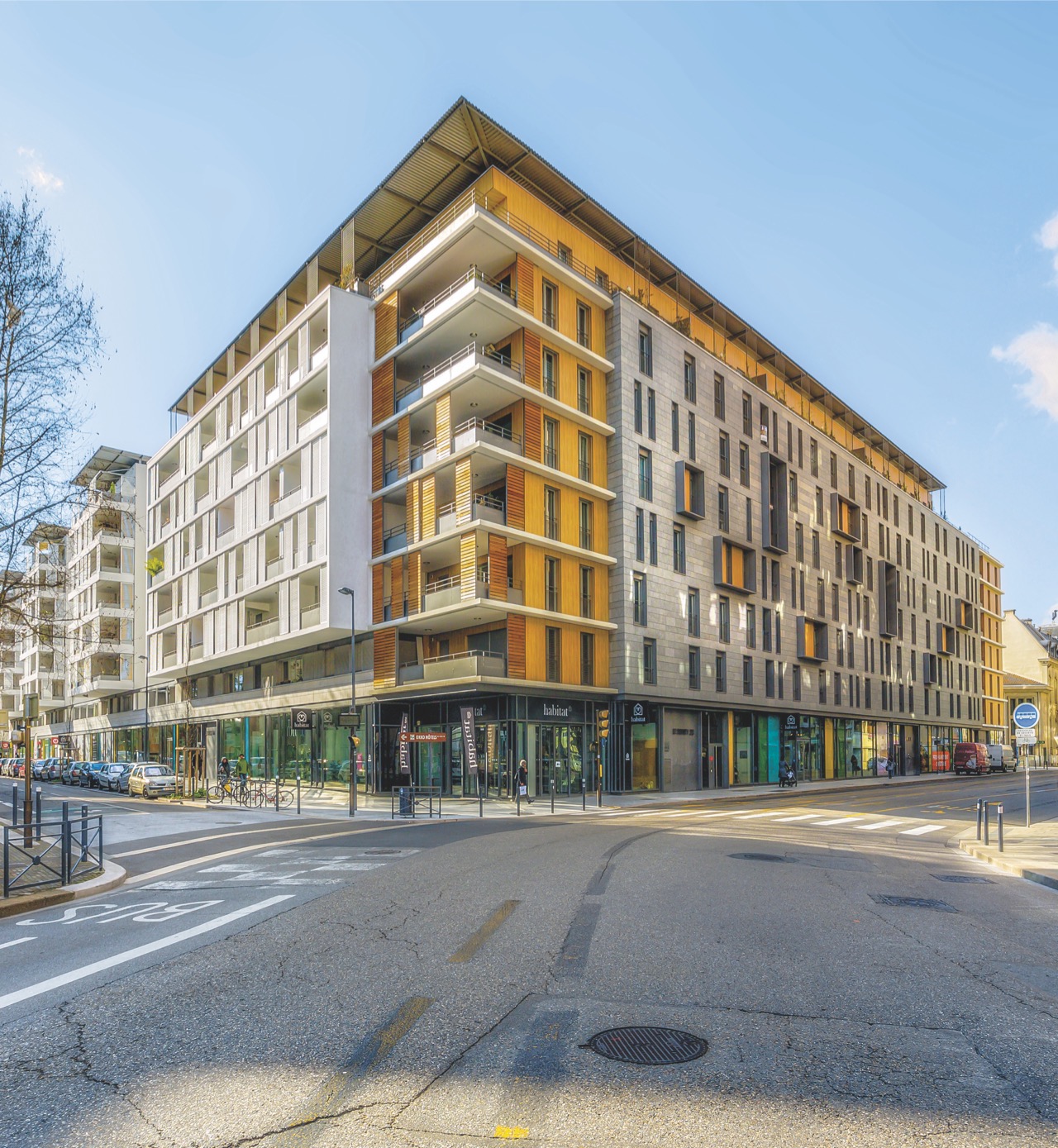
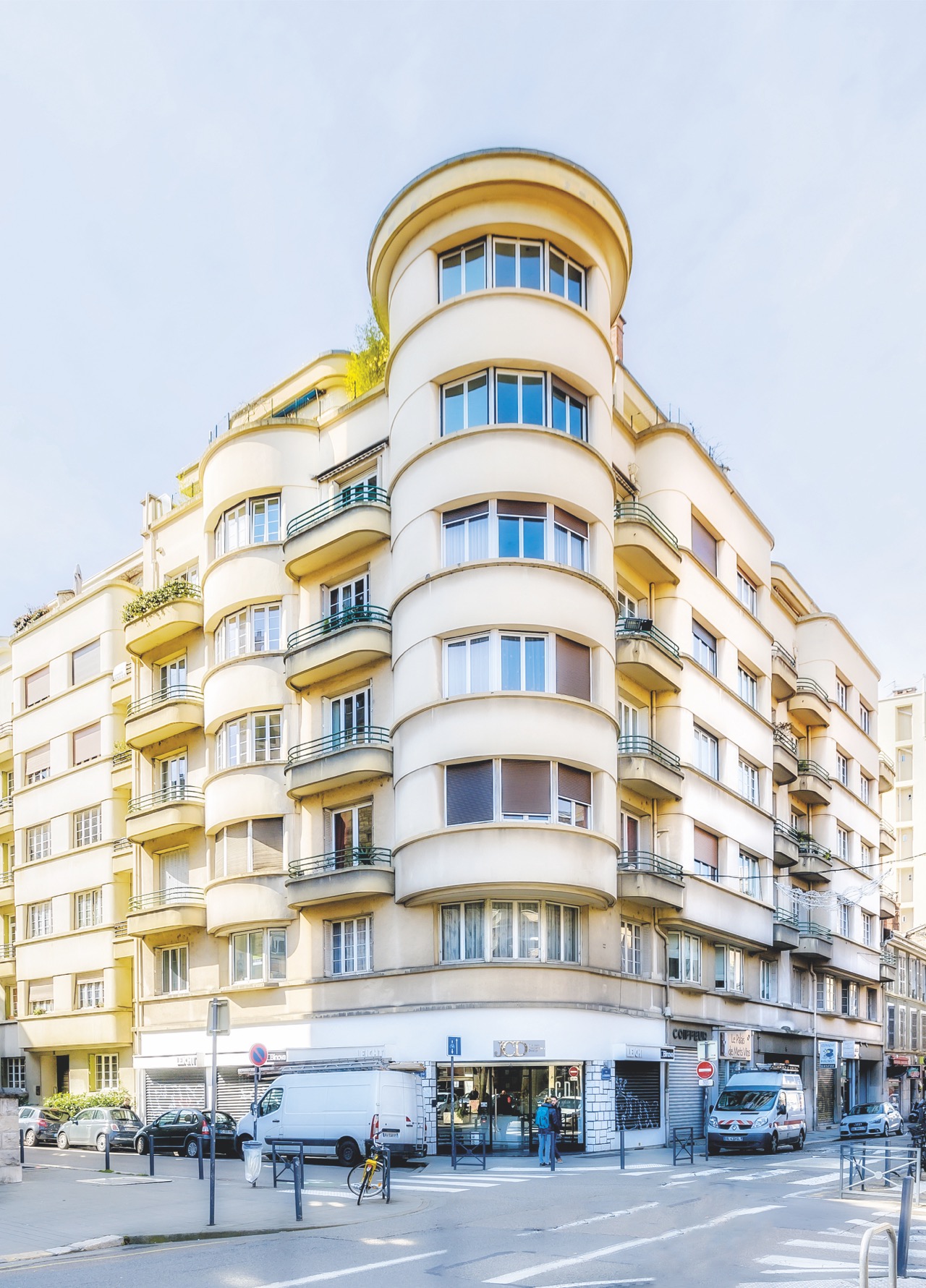
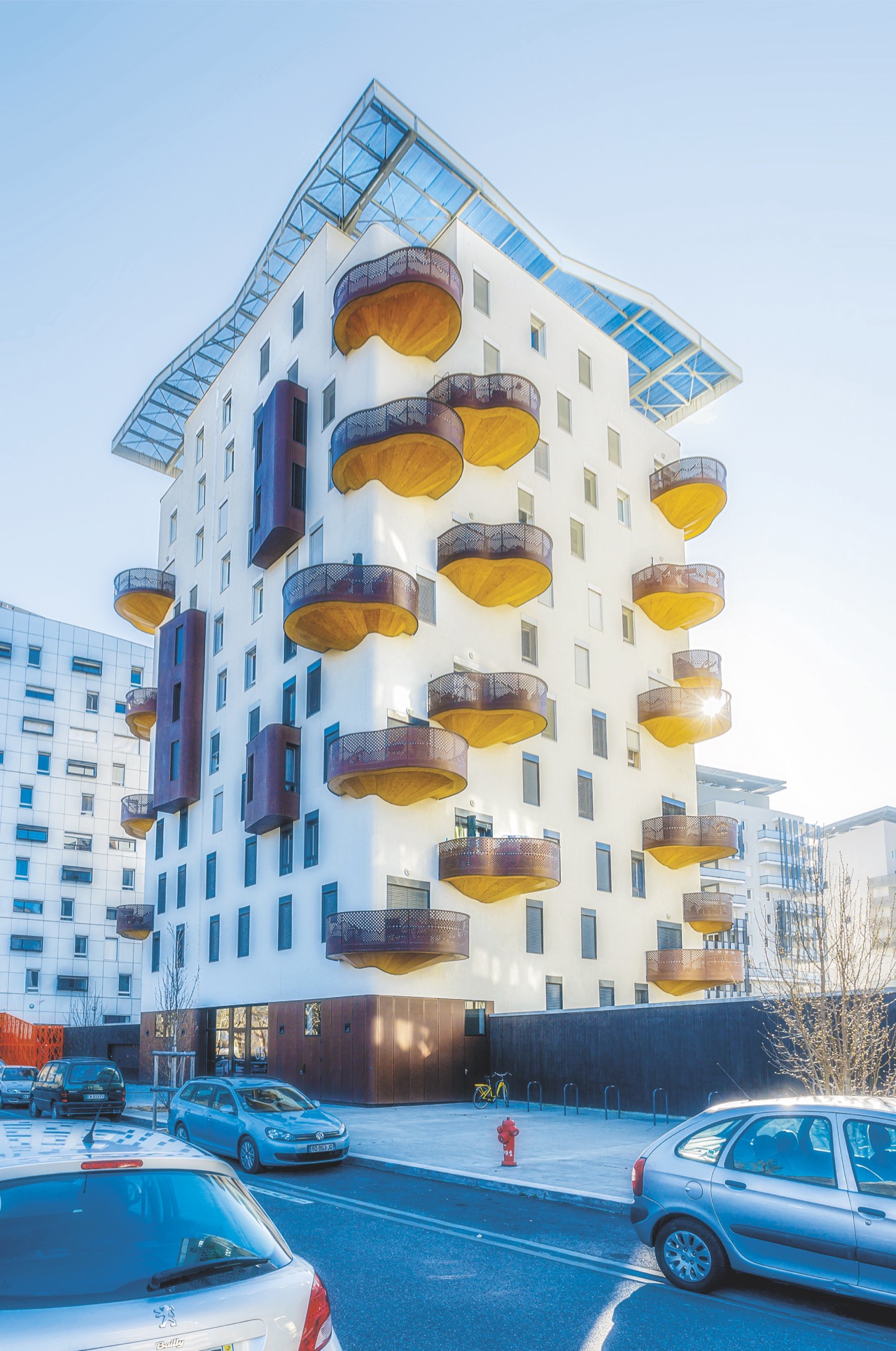
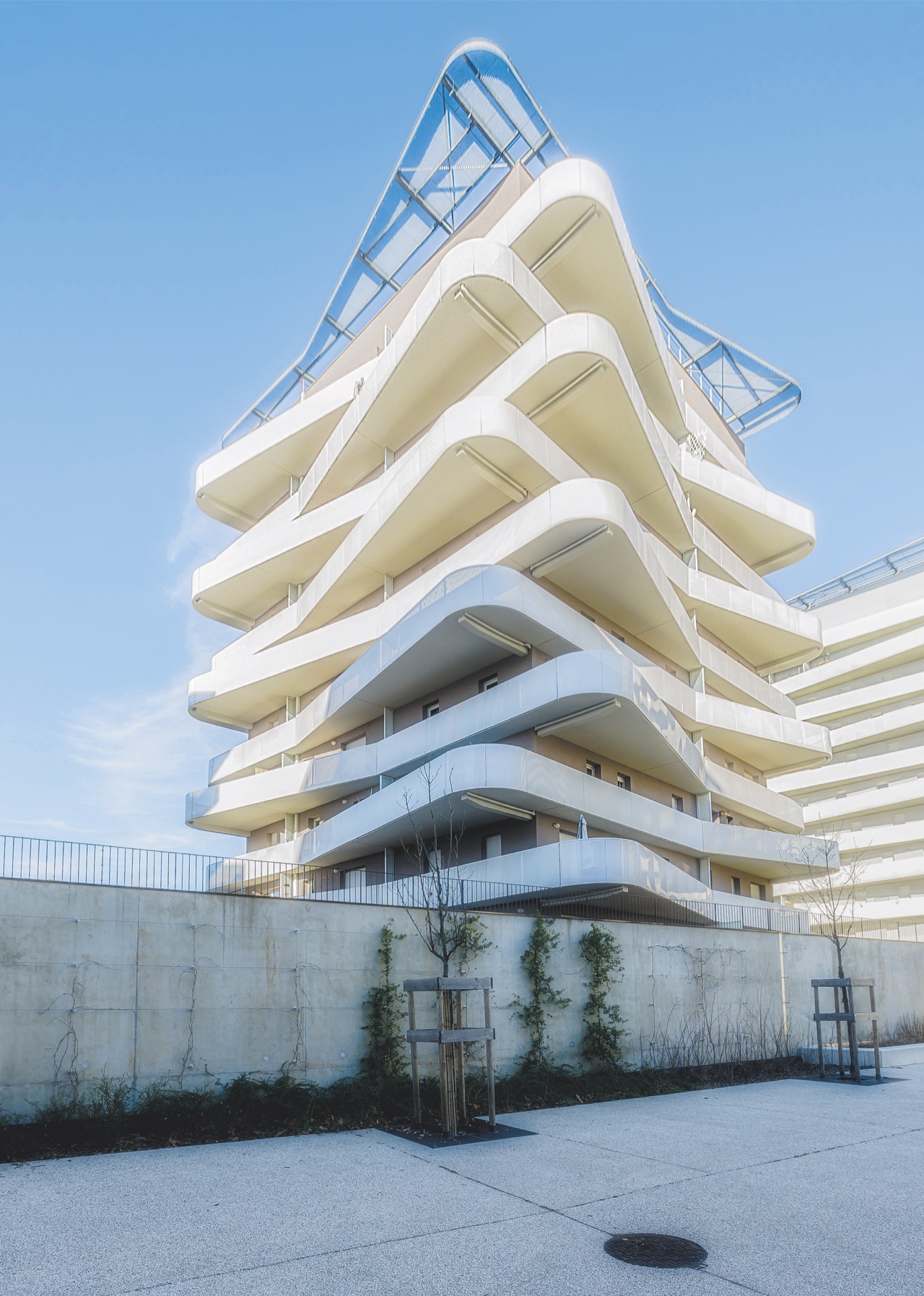
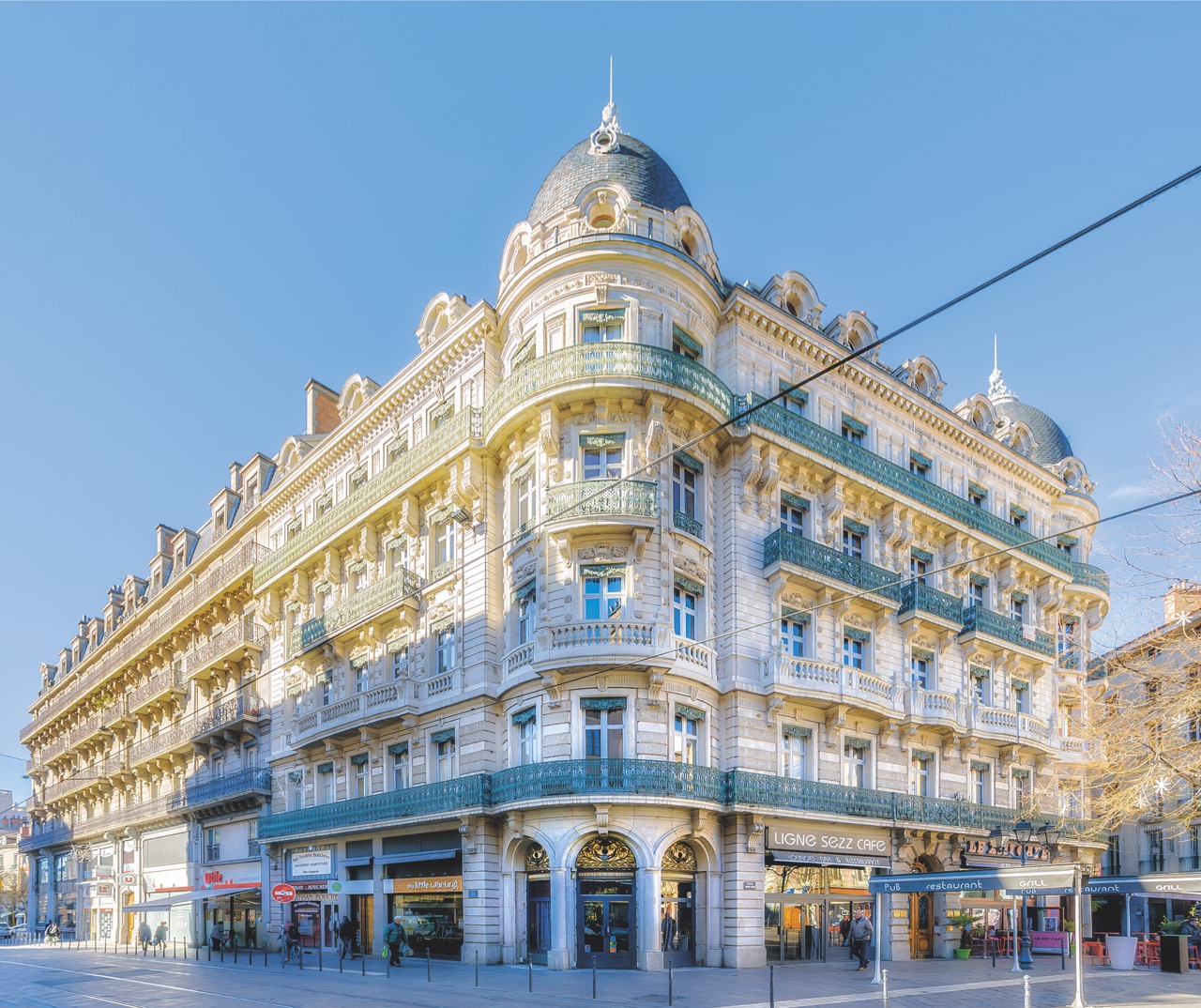
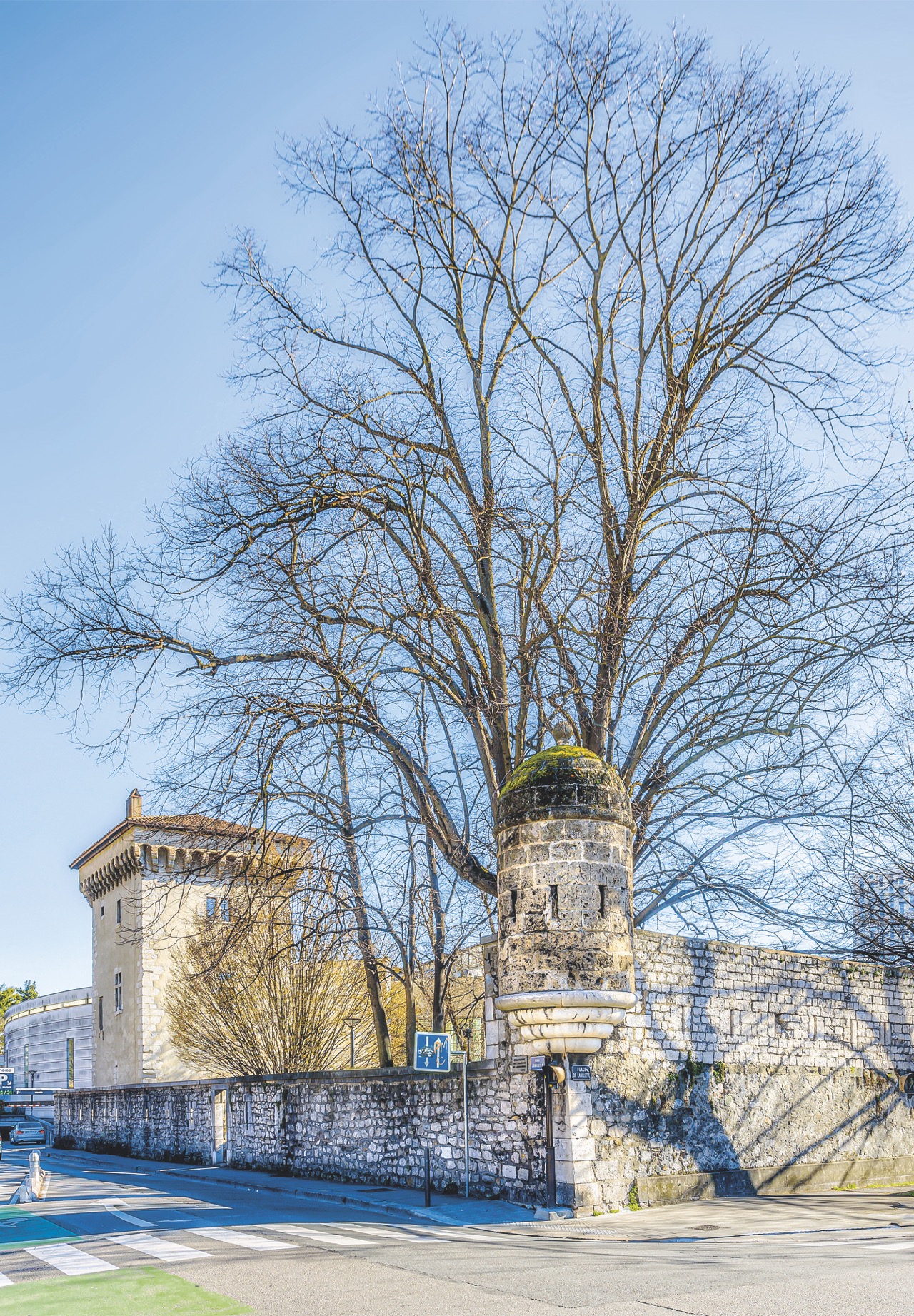
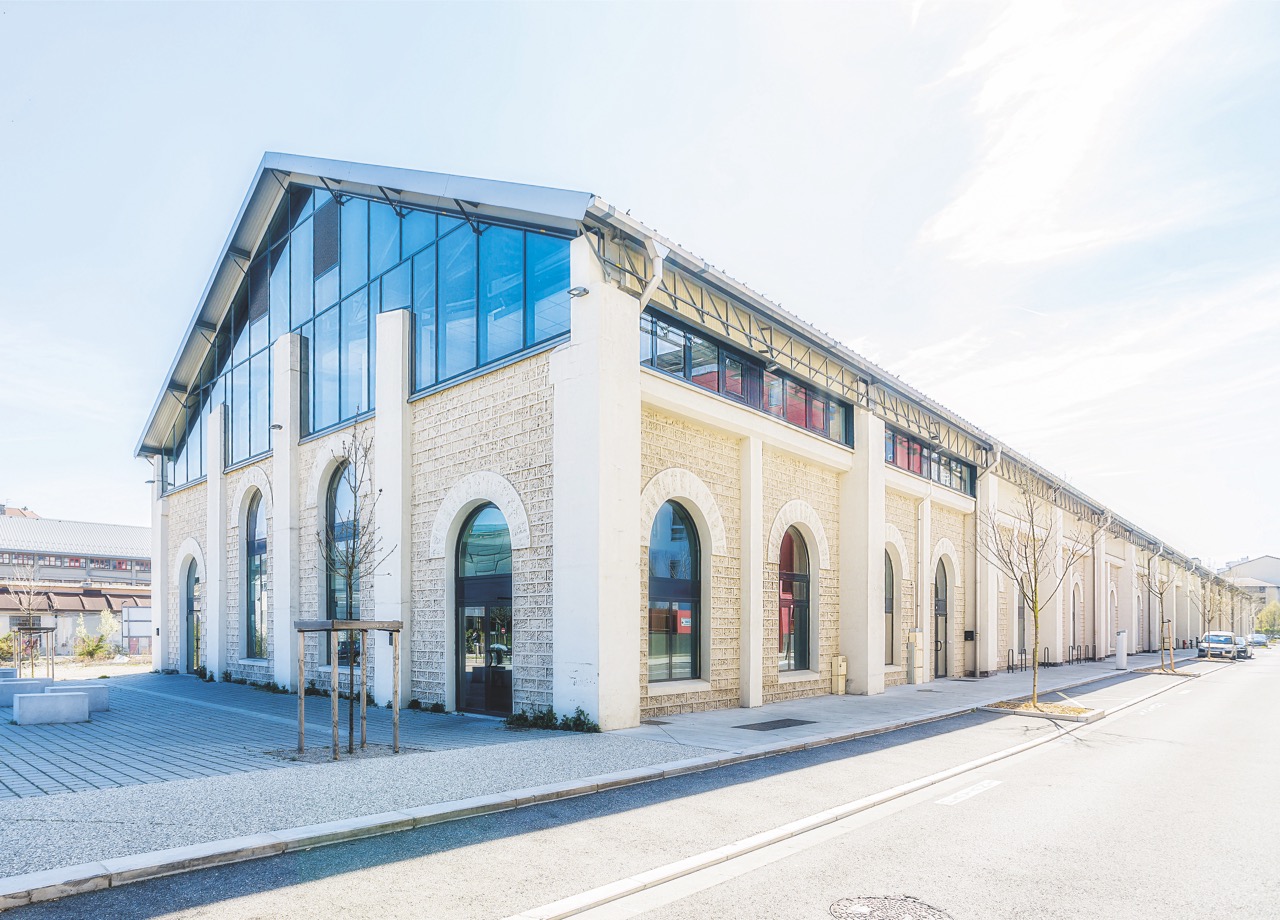
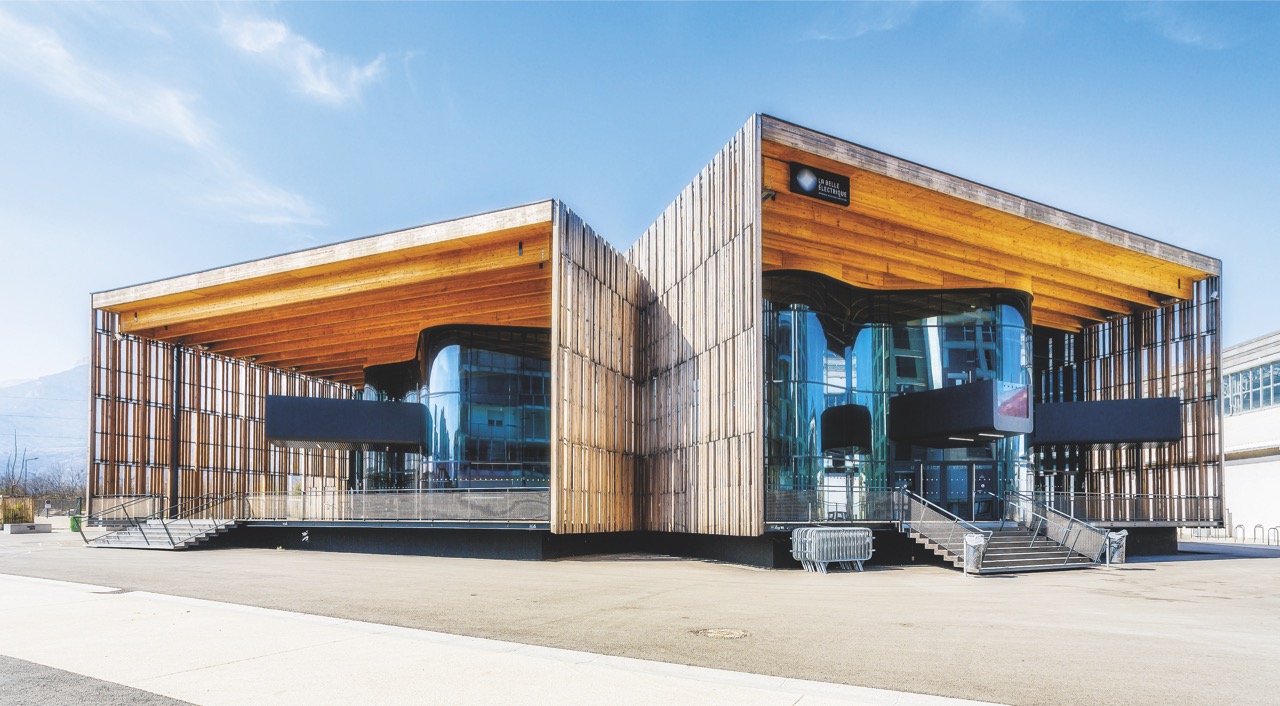
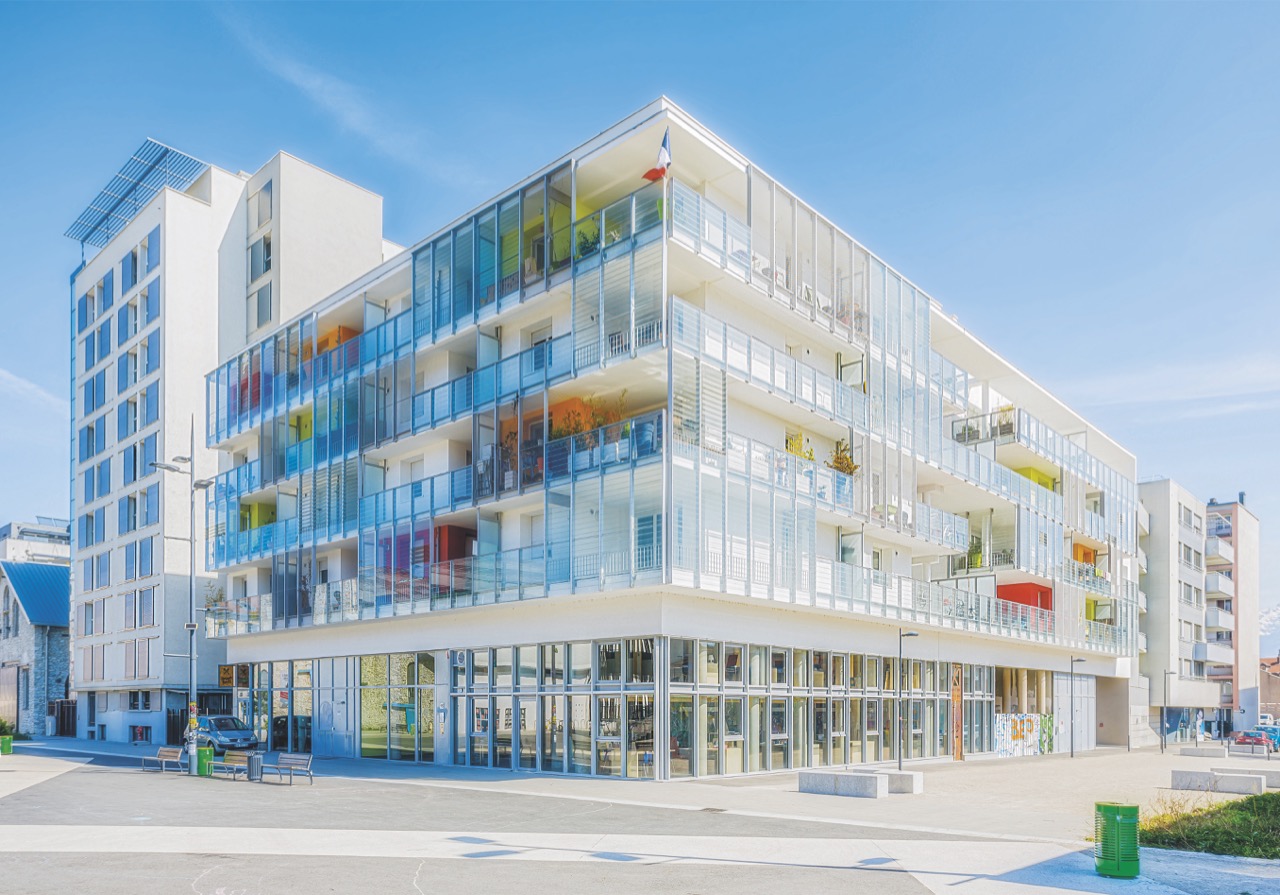
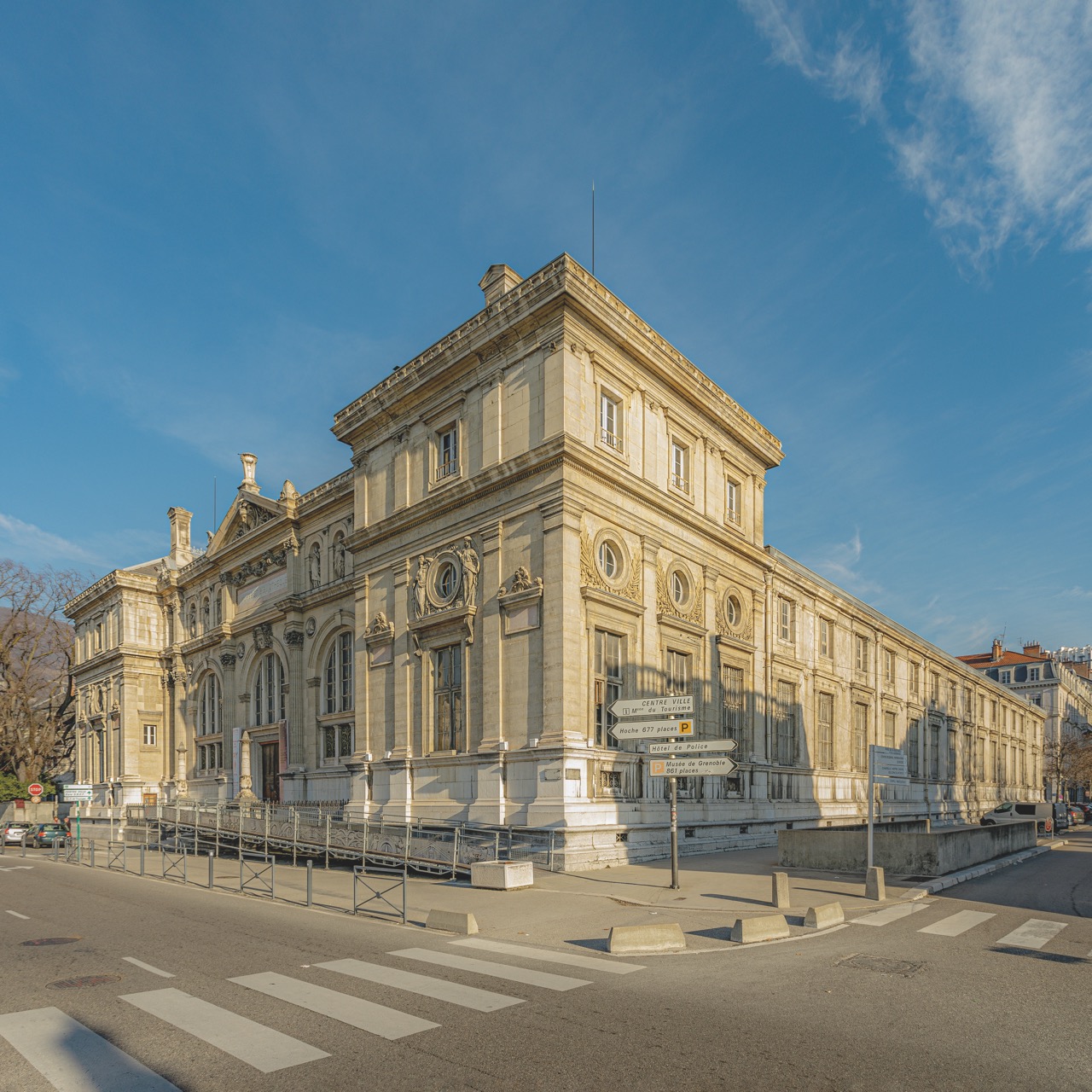
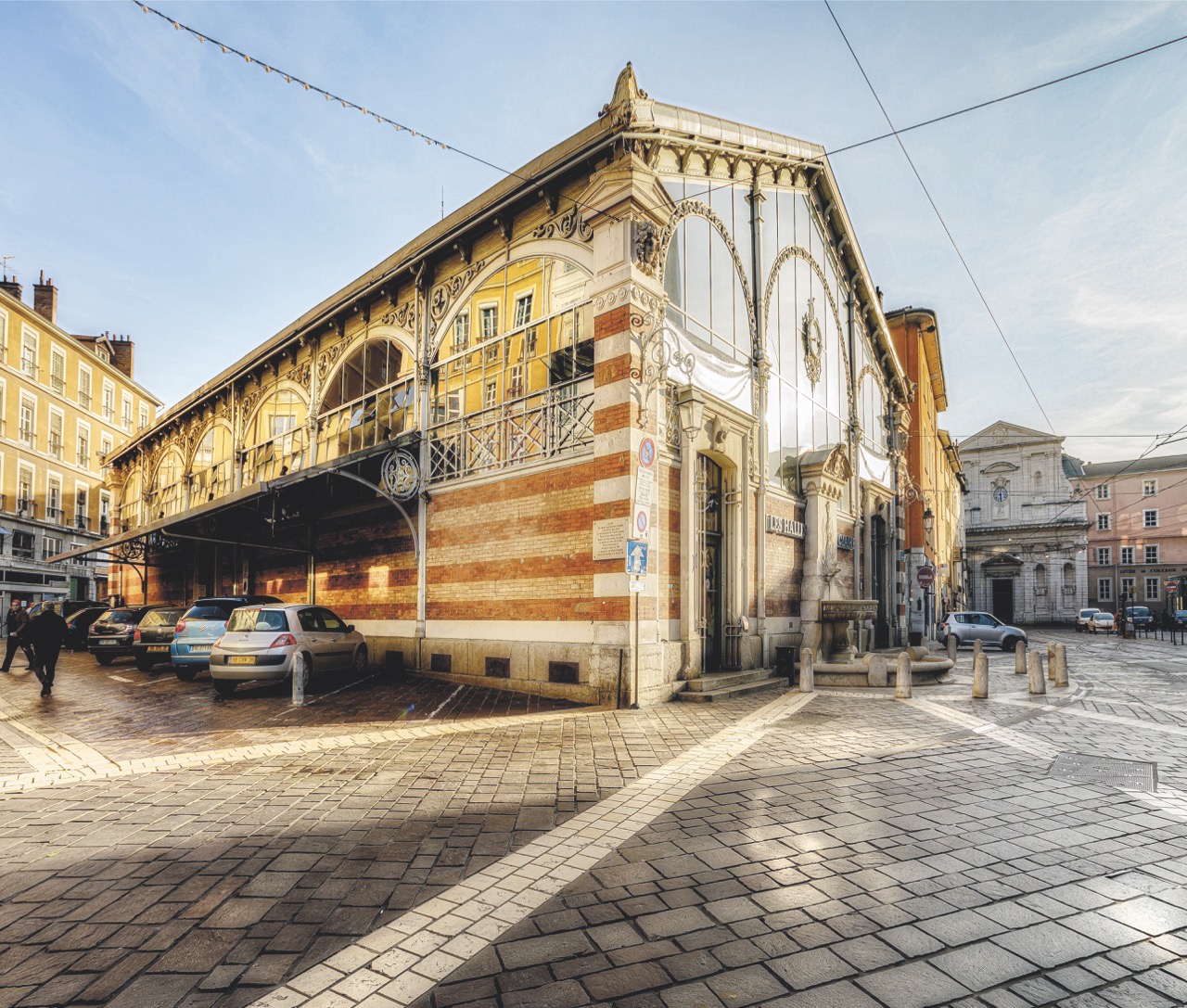
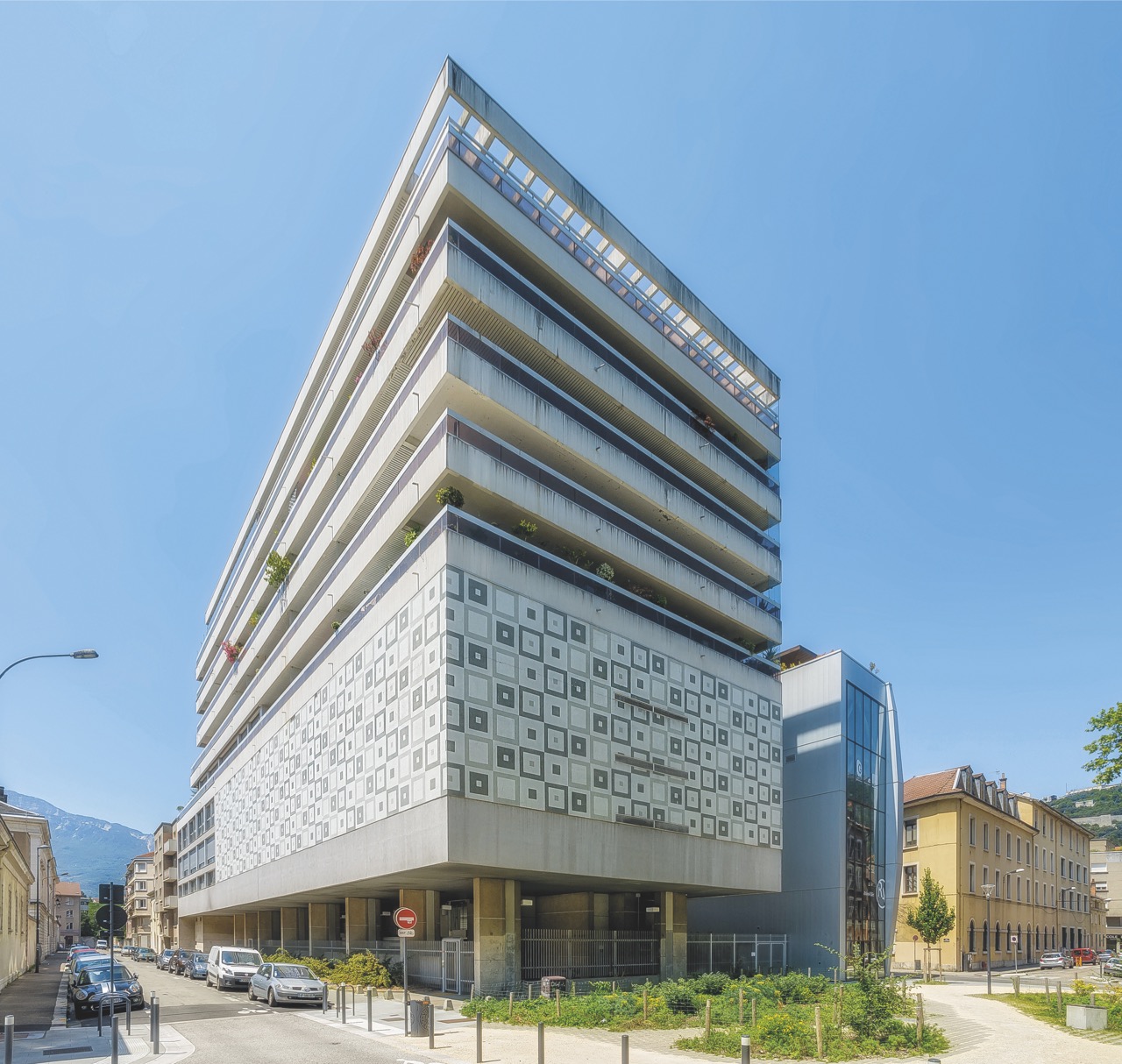
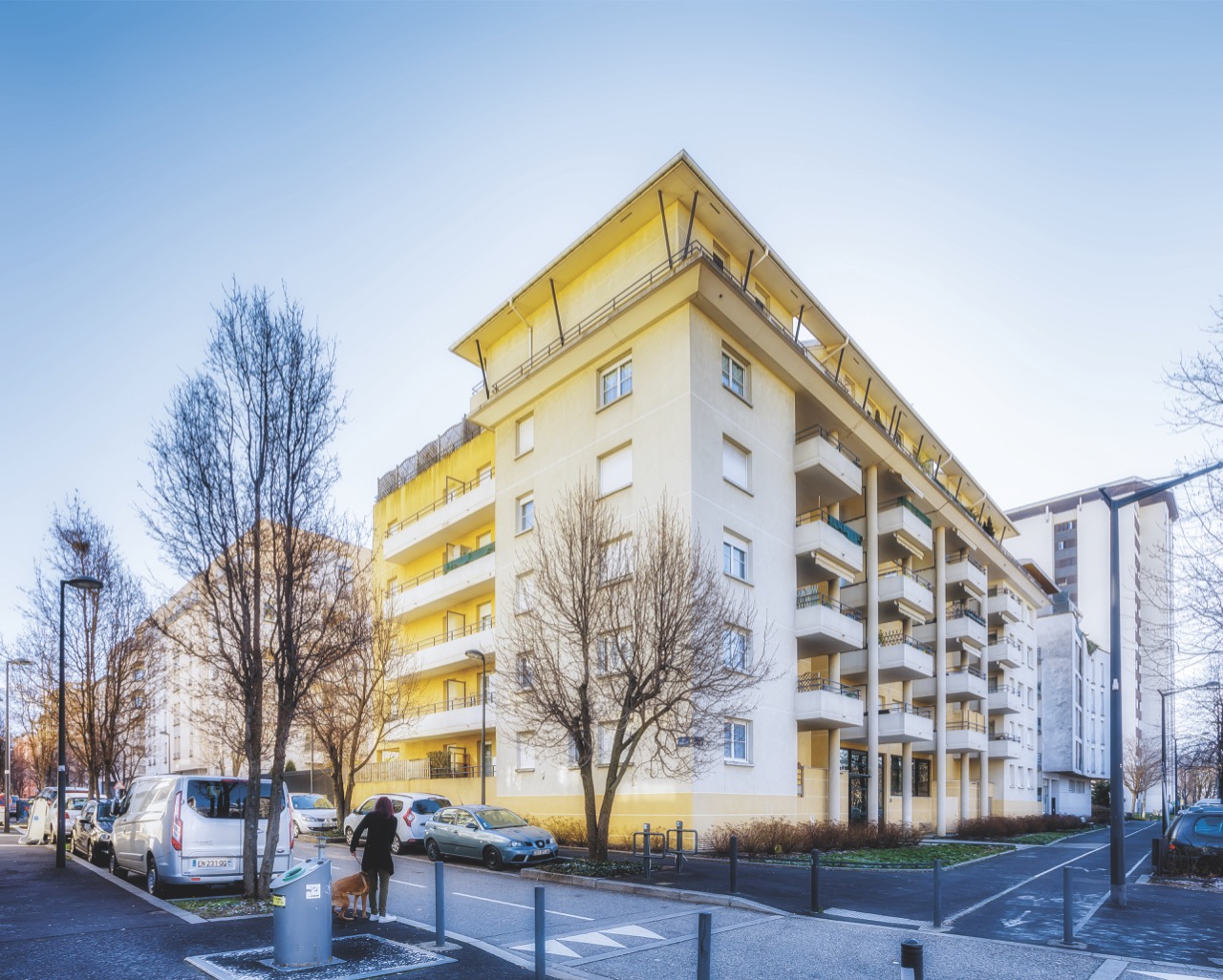
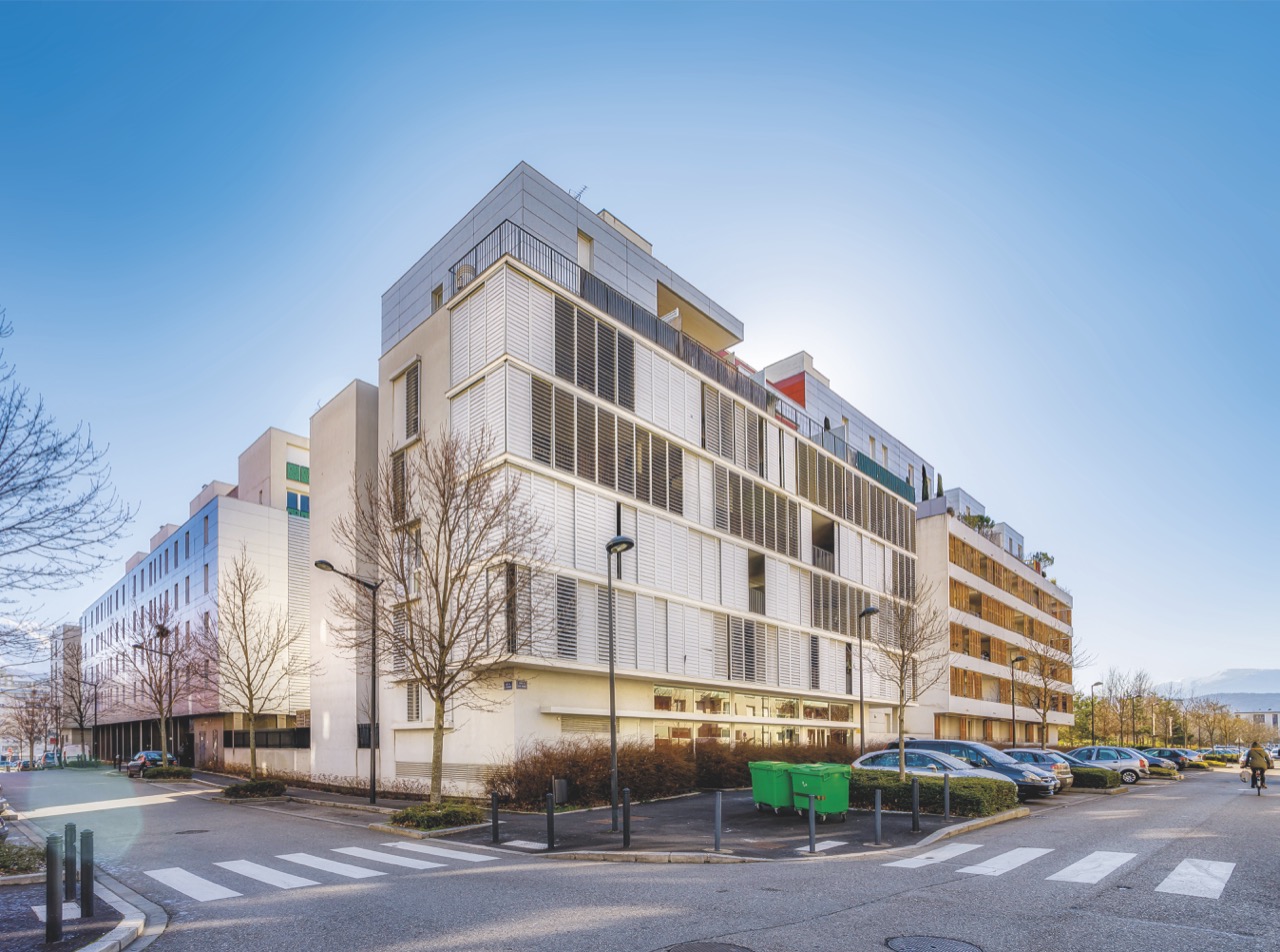
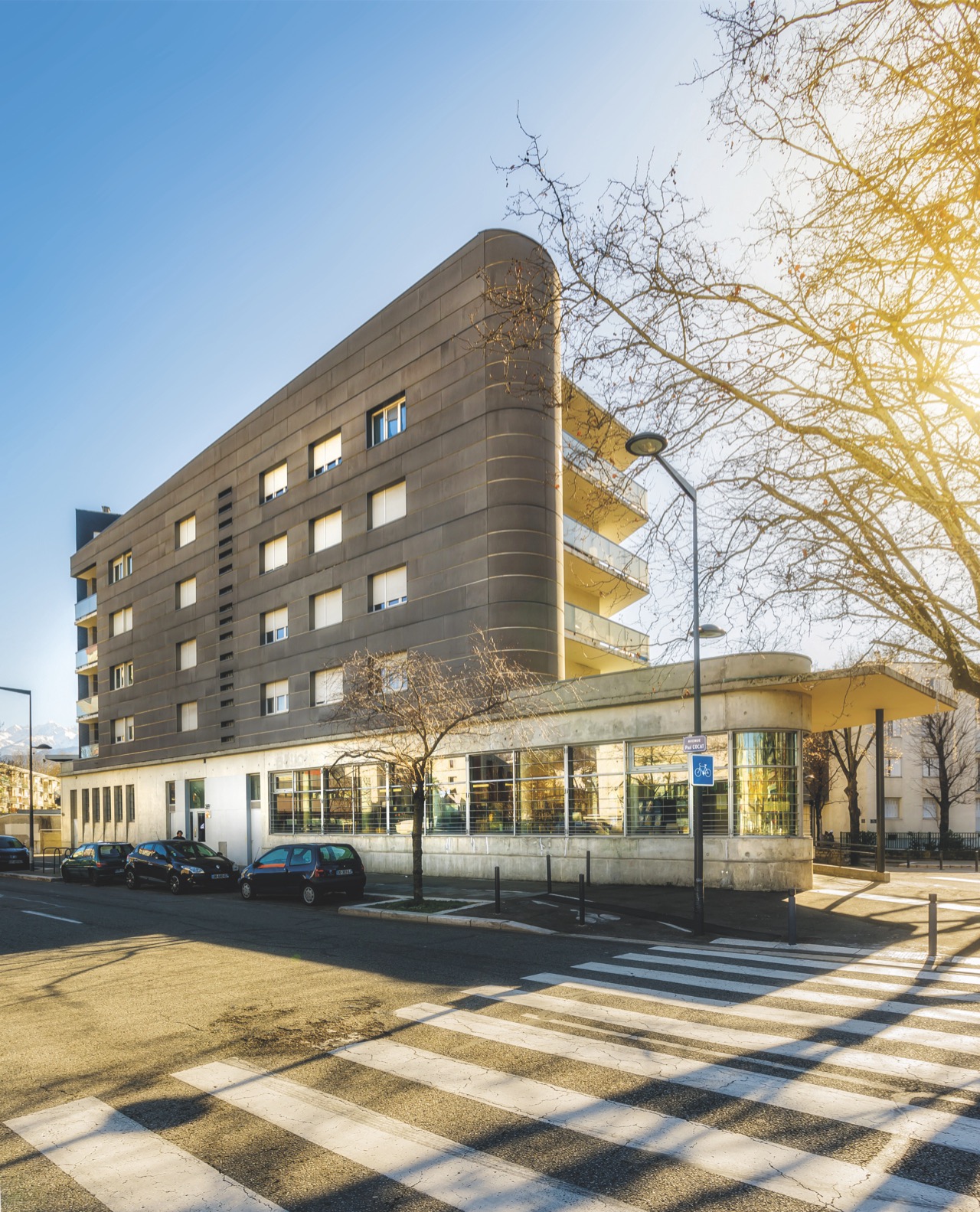
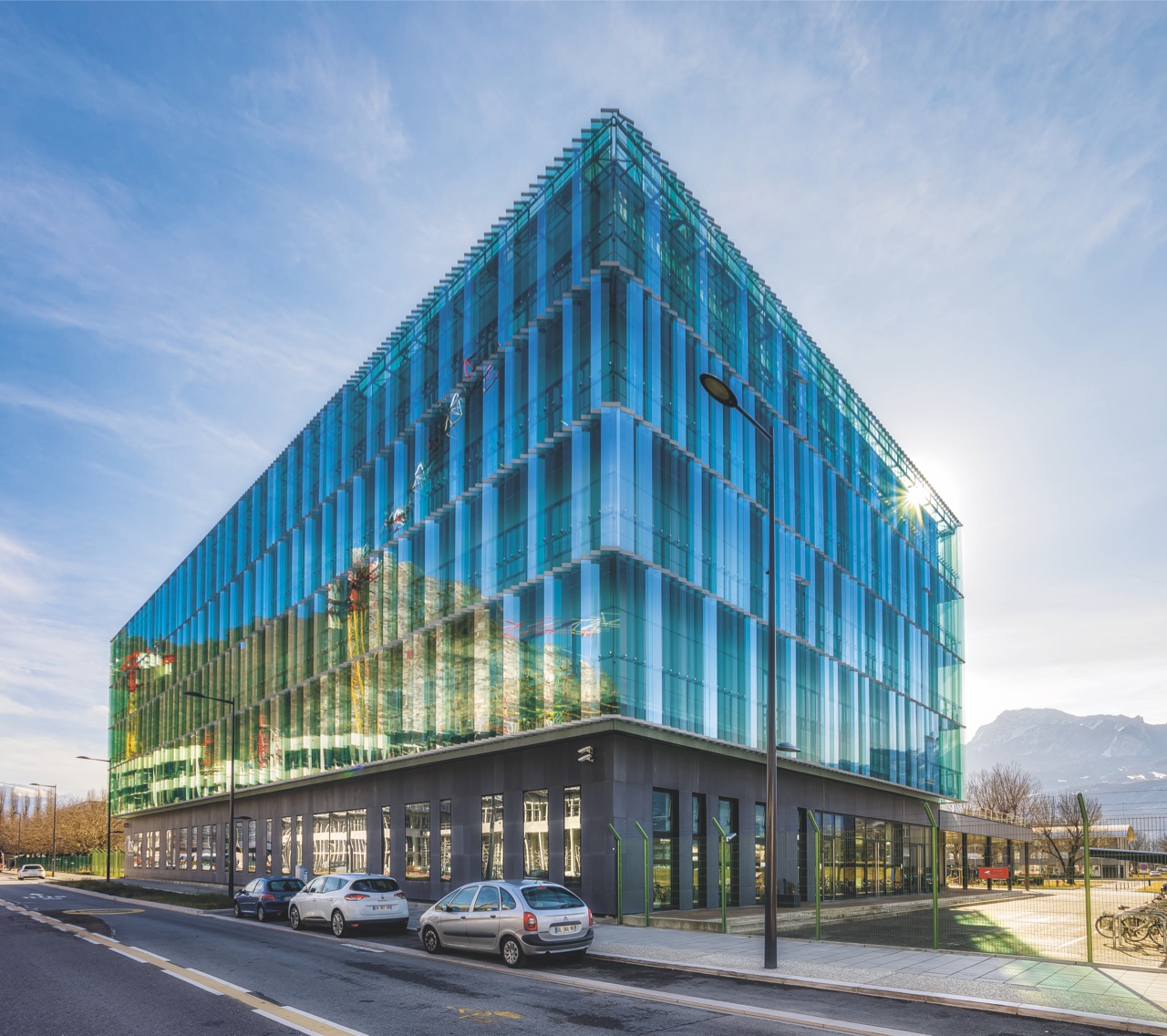
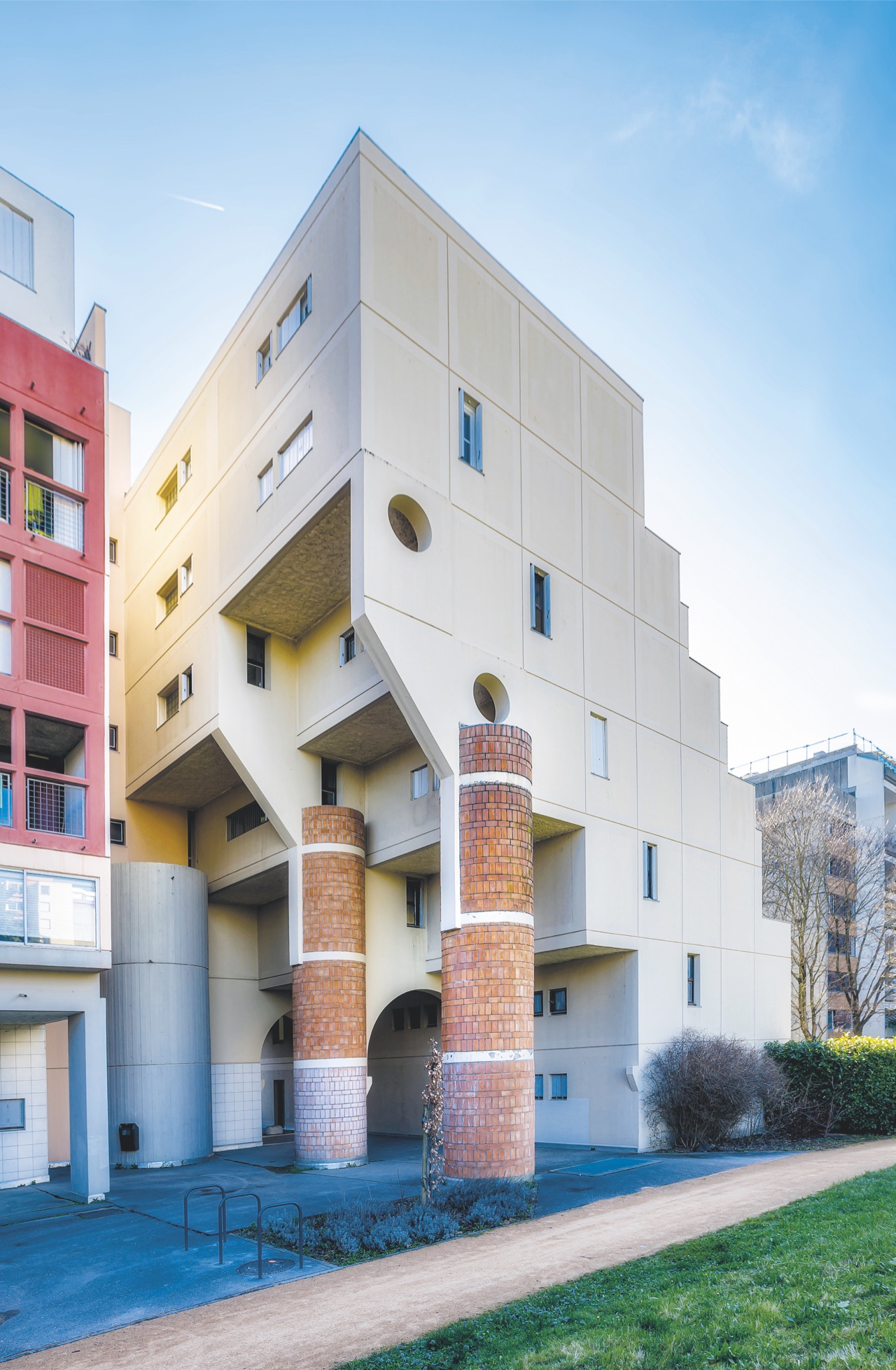
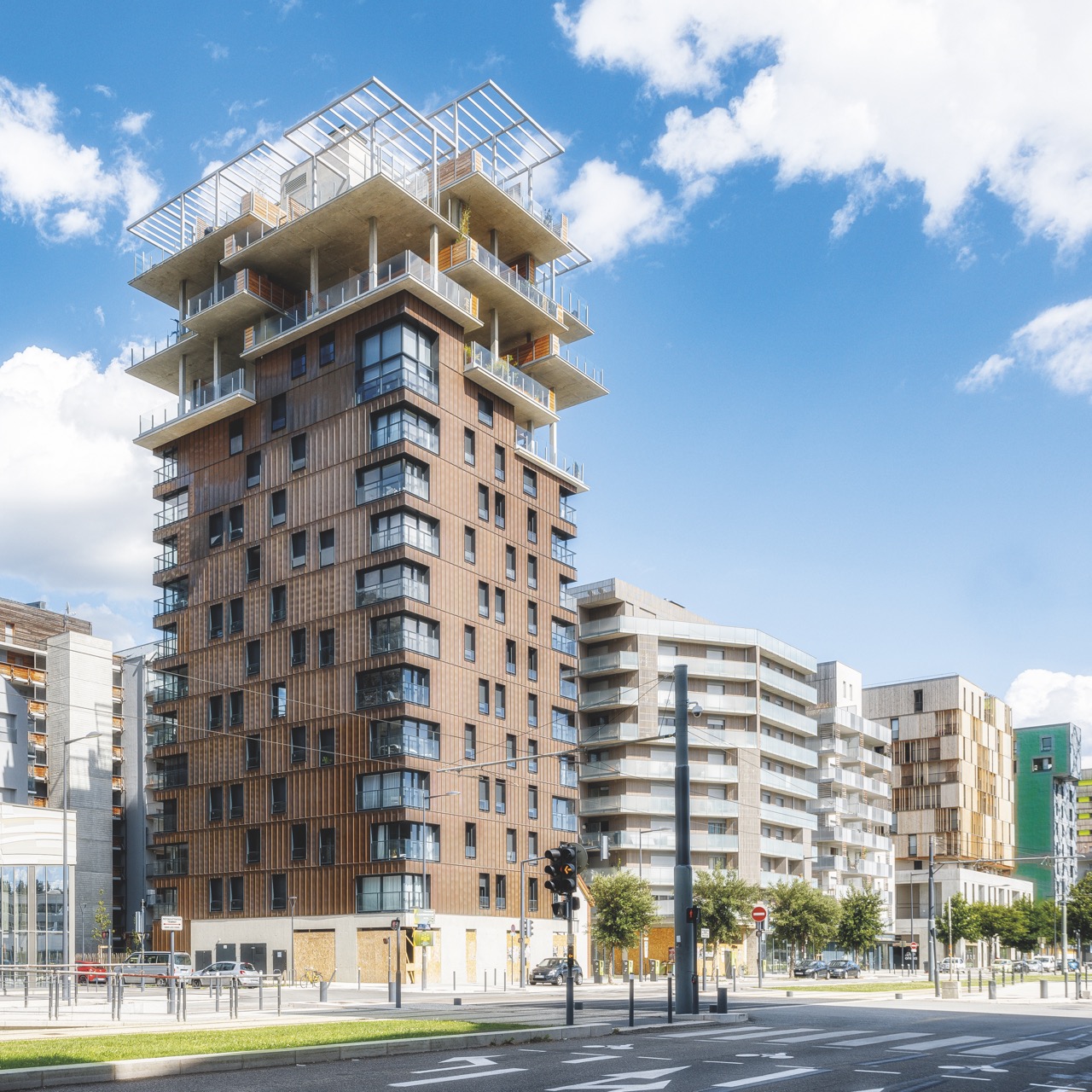
Regard en coin
L’immeuble s’inscrit dans la ville comme un navire dont la proue fend les flots. C’est la position avancée du bâtiment, l’avant-garde de la troupe entrant dans la place, la figure de proue annonçant le vaisseau amiral. Ne parle-t-on pas, en architecture, de « style paquebot » ? Pour tracer son sillage dans la Cité, l’architecte dispose d’une rhétorique formelle, dont l’angle est un argument tranchant. Angle aigu, angle obtus… Et c’est ainsi que Bruno Moyen a fait de la proue sa proie.
Il dit qu’il veut nous faire voir Grenoble « sous un autre angle ». Au sens strict, puisqu’il s’est ingénié à ne photographier que des angles justement, portraiturant chaque immeuble sous son trait le plus saillant. Certes, l’idée n’est pas inédite. Trois des plus grands photographes américains du début
du XXe siècle — Alfred Stieglitz, Edward Steichen et Alvin Langdon Coburn — ont immortalisé (le premier en 1903, le second en 1905 et le troisième en 1912) le Flatiron Building, fameux gratte-ciel de Manhattan au plan triangulaire marquant l’intersection entre la 5e Avenue et Broadway. Bruno Moyen connaît bien New York, on imagine qu’il connaît aussi ces photographies. Toutefois, systématisant le procédé jusqu’à l’exercice de style, il a fait de la chasse à l’angle un protocole photographique à part entière, mais encore une façon nouvelle (et ludique) de regarder sa ville natale.
Car Bruno Moyen a soigné ses clichés. Si son « regard en coin » permet d’isoler le bâtiment, d’en rendre plus évidents le volume et les lignes, le photographe a choisi d’enchérir, privilégiant une présence humaine minimale et retravaillant ses prises de vue, afin d’obtenir des perspectives redressées, des lignes de fuite bien droites, etc. Conférant aussi à ses photographies une lumière claire, une transparence de l’air et des tons pastel, Bruno Moyen pastiche avec malice les dessins d’architecte illustrant les publicités de promotion immobilière. Du coup, tous ces angles de bâtiments — parfois angles arrondis, mais parfois arêtes vives — saisis avec beaucoup de recul et un grand souci esthétique donnent de l’architecture une vision grandiose, ouvrant l’espace et agrandissant le ciel. On en conclut que le photographe est doué, et que Grenoble ne manque pas de caractère.
Une ville aux grands angles vue au grand-angle.
Jean-Louis Roux
Critique d'art, ecrivain.
From the corner of his eye
A building appears in the city like a ship through waves. The corner angle is the building’s bow, the flagship’s figurehead, the vanguard troops entering the town. In fact, the Streamline architectural style is known in French as the paquebot (“ocean liner”) style. To create waves in the city, architects use a language made of shapes, and the angle is their most cutting rhetorical device, whether sharp or obtuse.
Bruno Moyen says he wanted to show us Grenoble “from another angle”. Quite literally, since he chose to restrict himself to angle photography, taking each building’s portrait from its most prominent aspect. Of course, this is not a new concept. Alfred Stieglitz, Edward Steichen and Alvin Langdon Coburn, three of the greatest US photographers from the early 20th century, captured the Flatiron Building (in 1903, 1905 and 1912 respectively), that famous triangular Manhattan skyscraper that intersects Fifth Avenue and Broadway. Because Moyen knows New York, he most probably also knows their photographs. But by turning this approach into an exercise in style, he has made angle chasing a genre in and of itself–and, above all, a new and fun way to look at his home town.
Bruno Moyen is nothing if not meticulous. While his “sidelong glance” enables him to isolate a building, bringing out its proportions and lines, he takes this ethos even further, ensuring minimal human presence and working on his photographs to get upright perspectives with straight vanishing lines, etc. Mischievous spoofs of architectural drawings from real estate advertisements, his photographs also have clear, crisp light, and pastel tones. As a result, all these building angles – some rounded, some sharp-edged –, captured from a considerable distance with a keen artistic eye, create an impression of architectural grandiosity, opening up the space and broadening the sky. It is obvious that the photographer has plenty of talent, and that his town has plenty of character.
Here is a city of great angles, as seen through a wide angle lens.
Jean-Louis Roux
Art critic, writer
"Grenoble
sous un autre angle"
quelques images du livre
